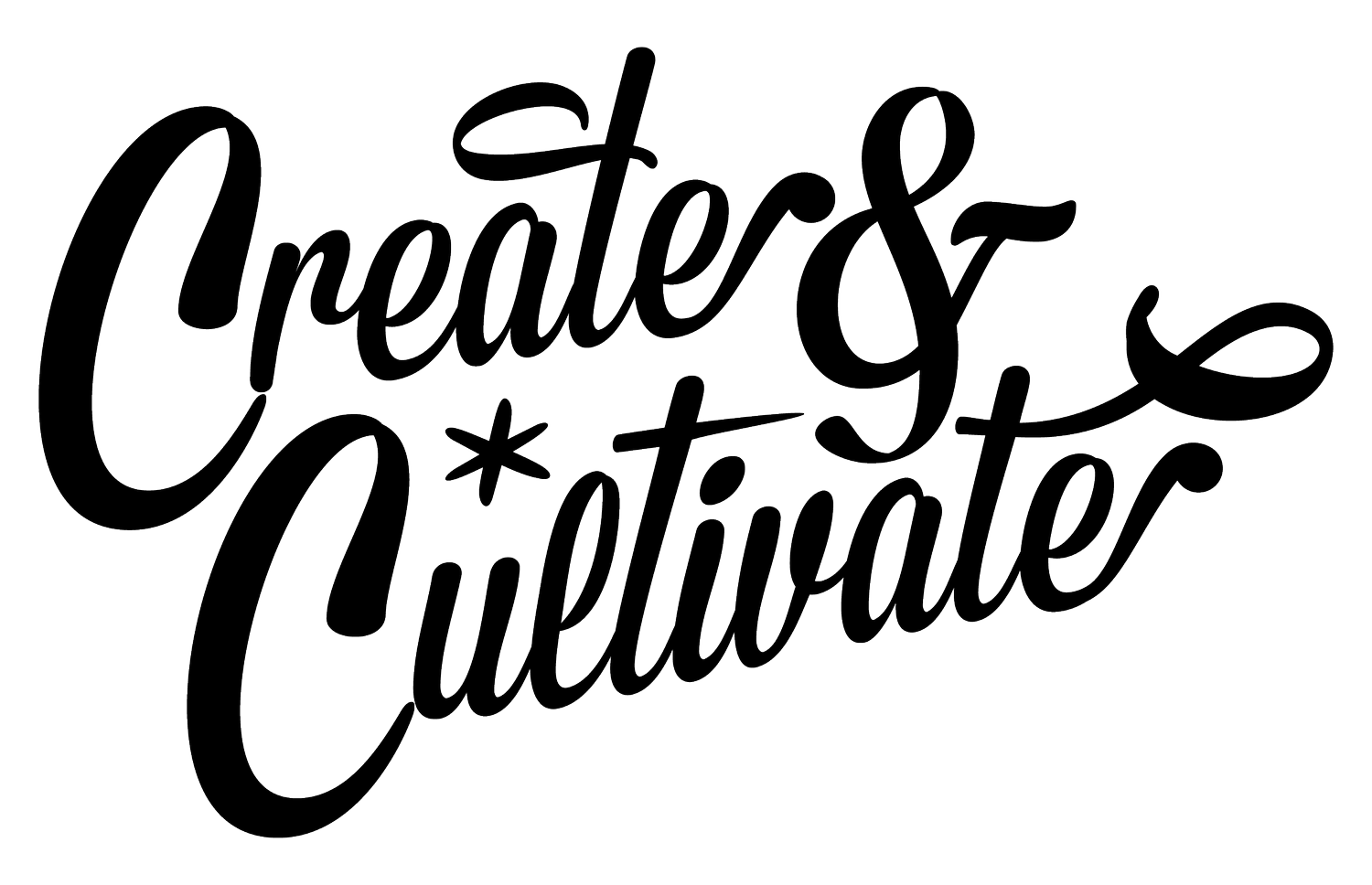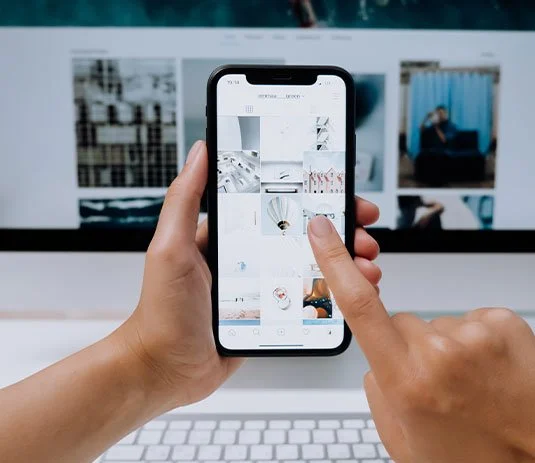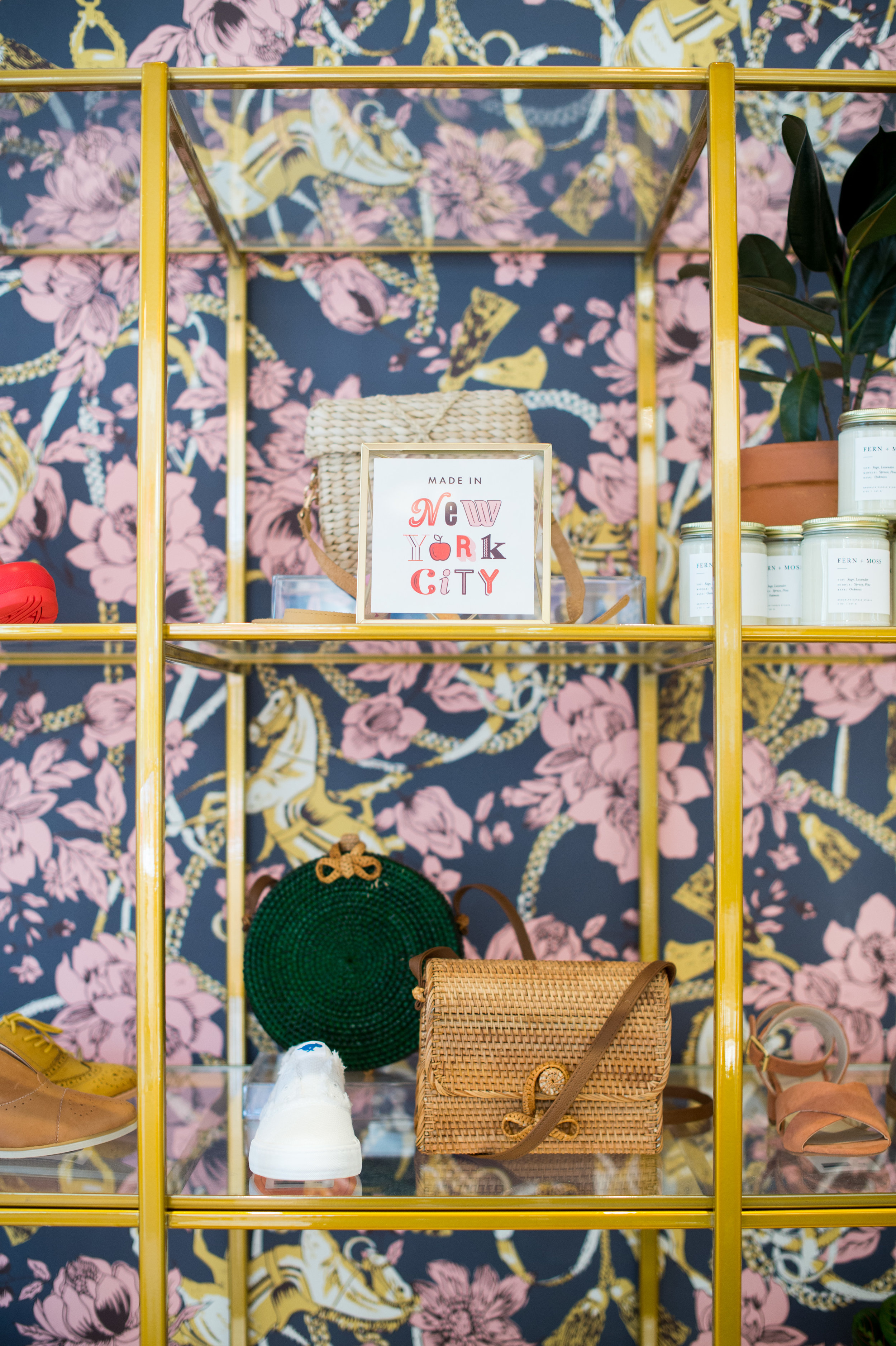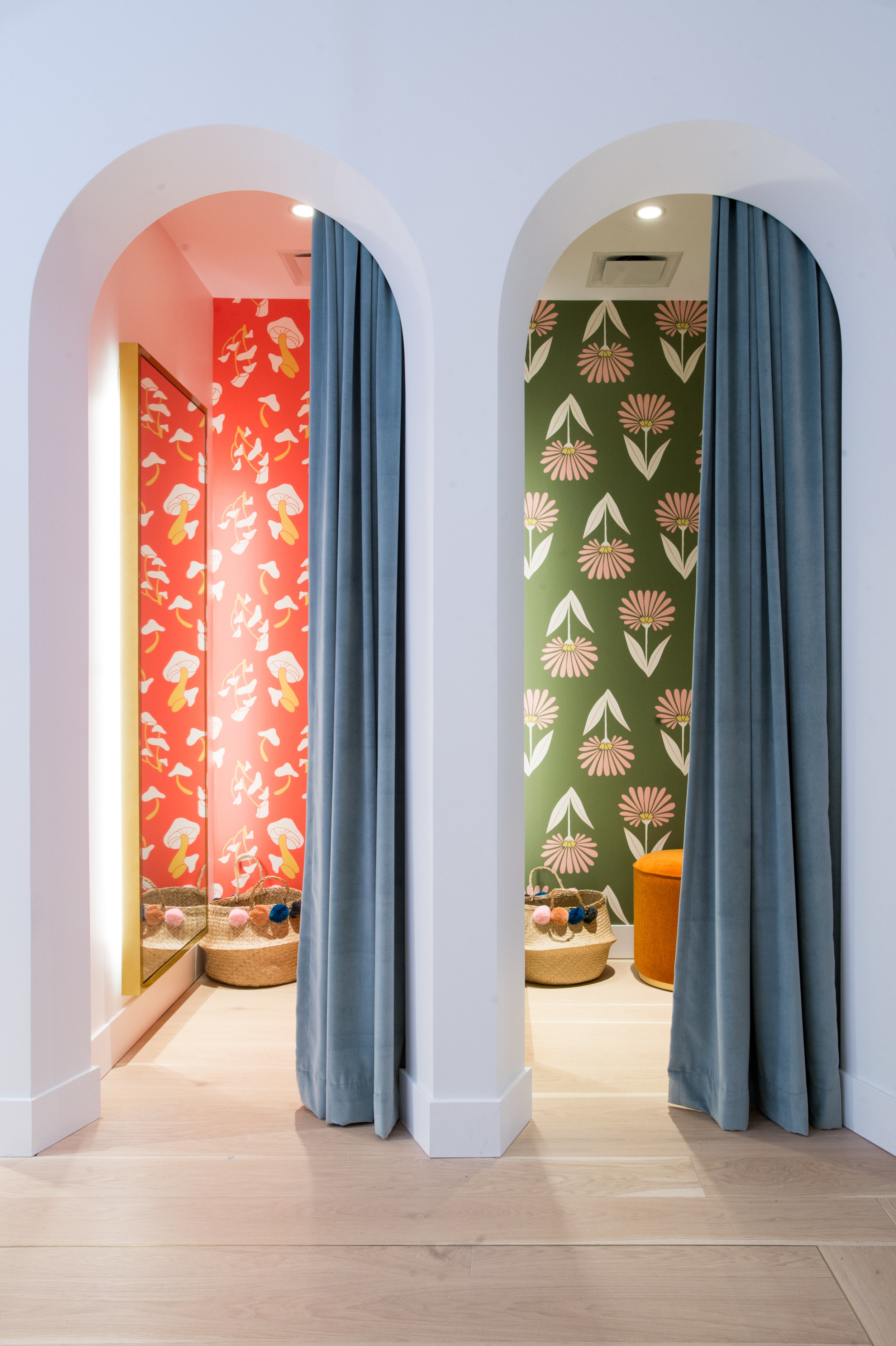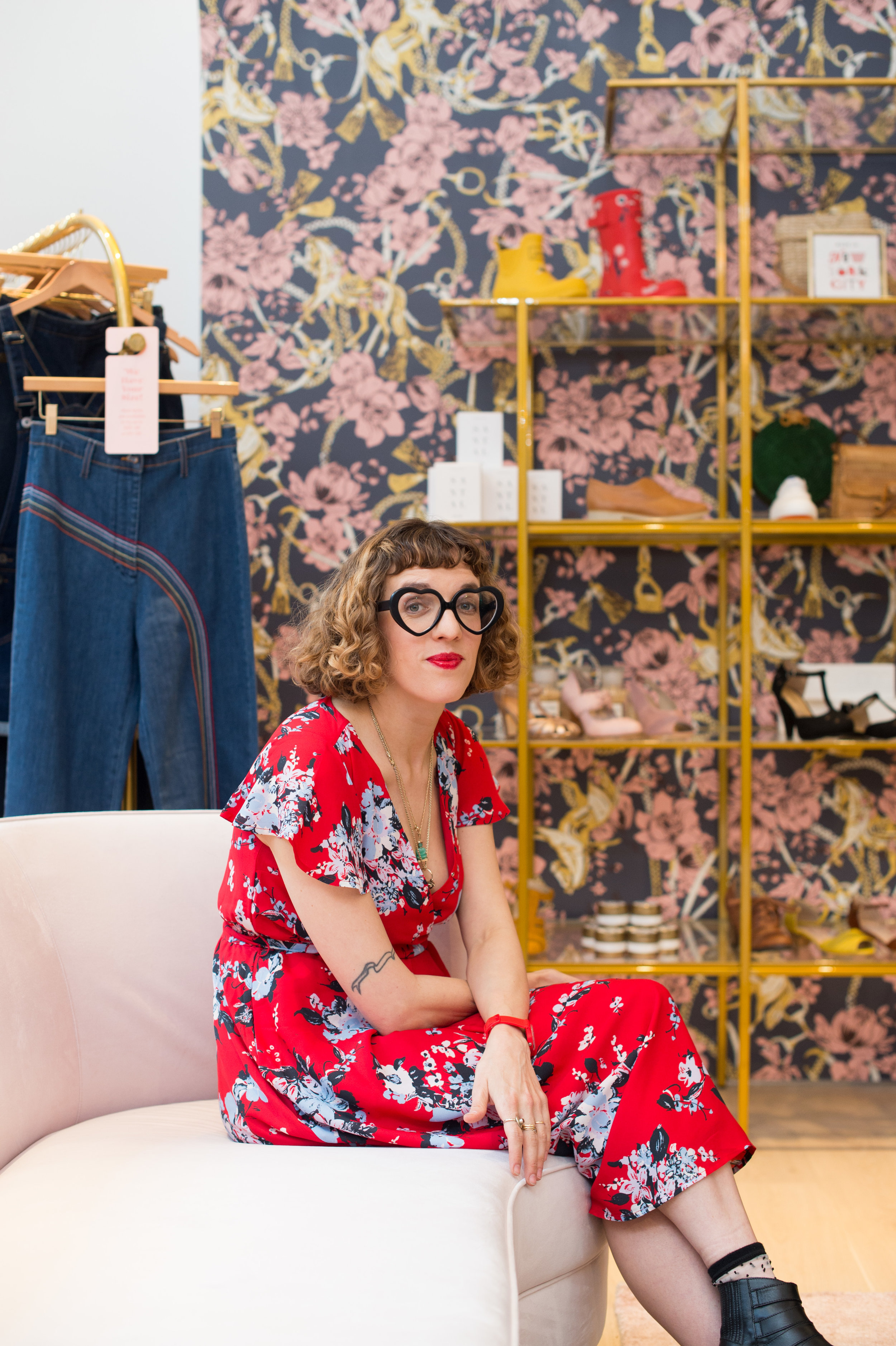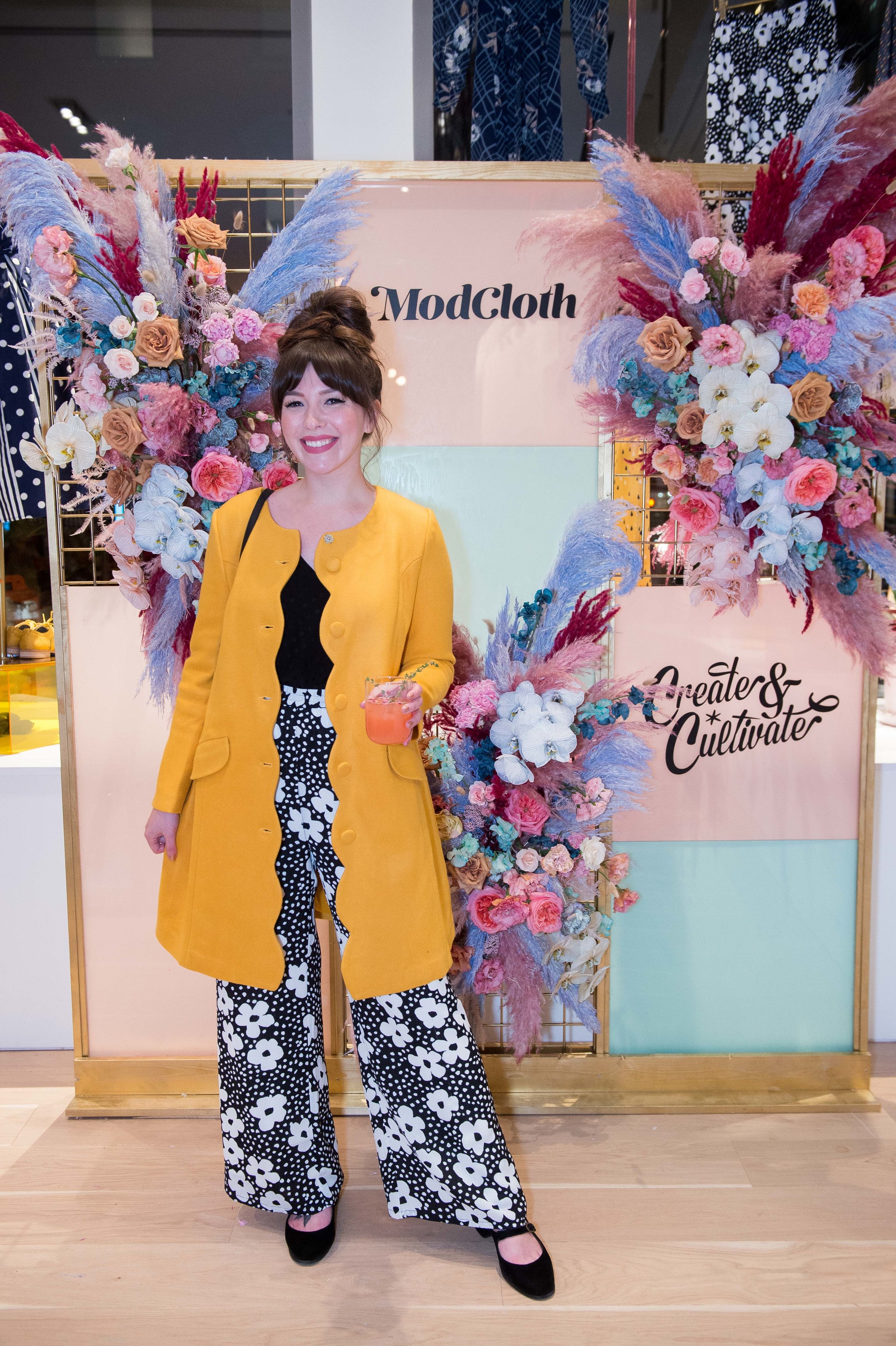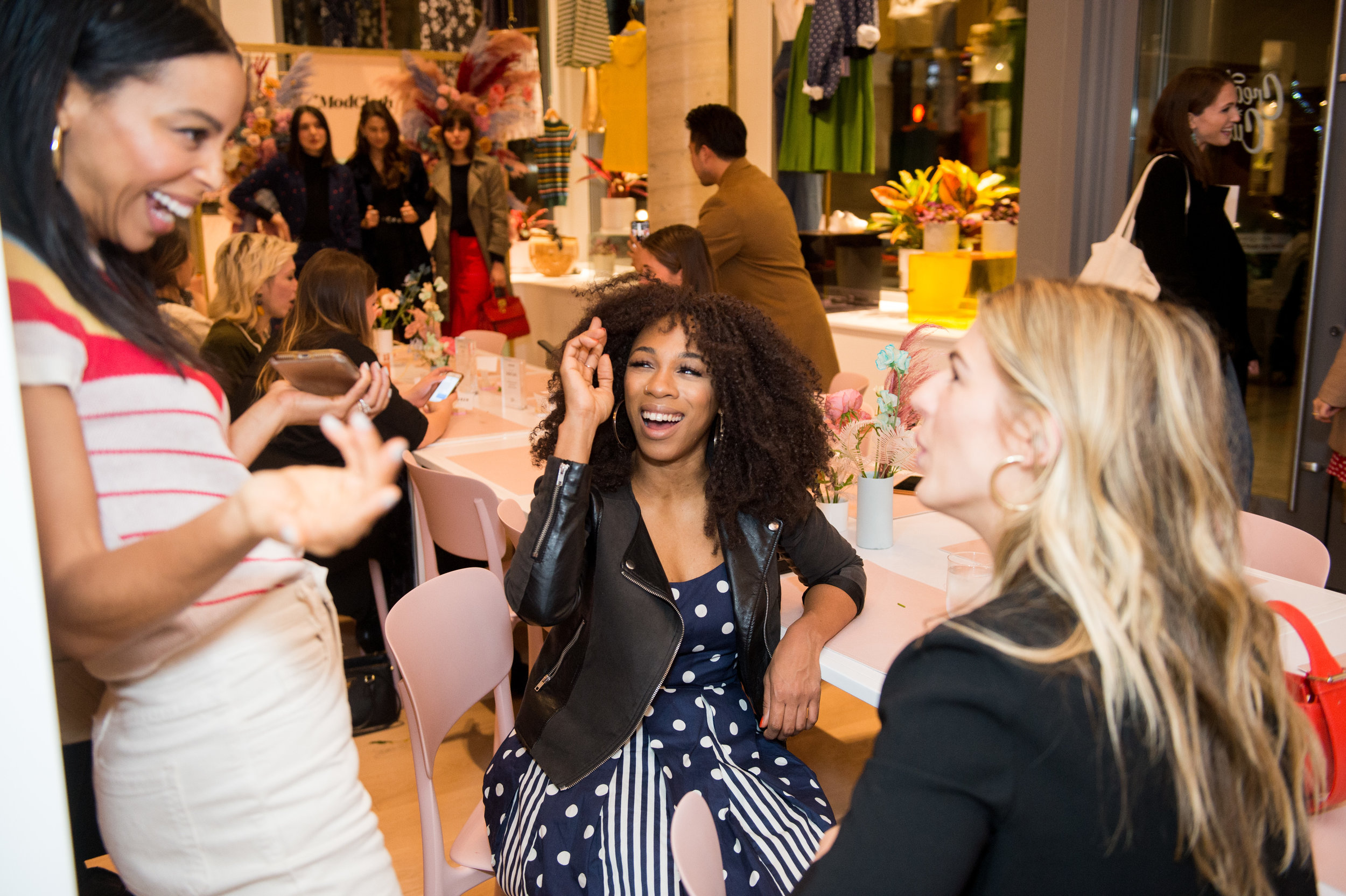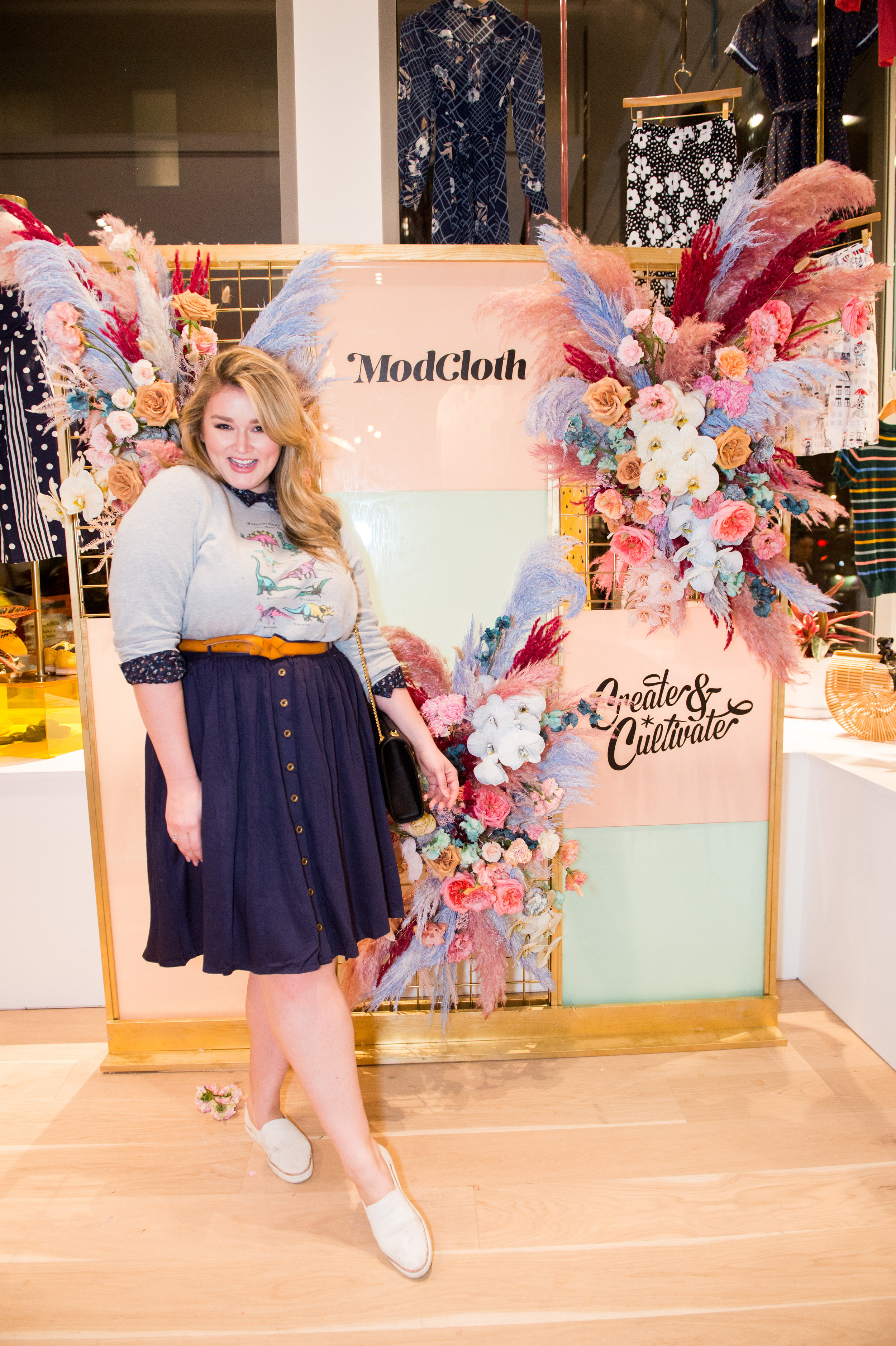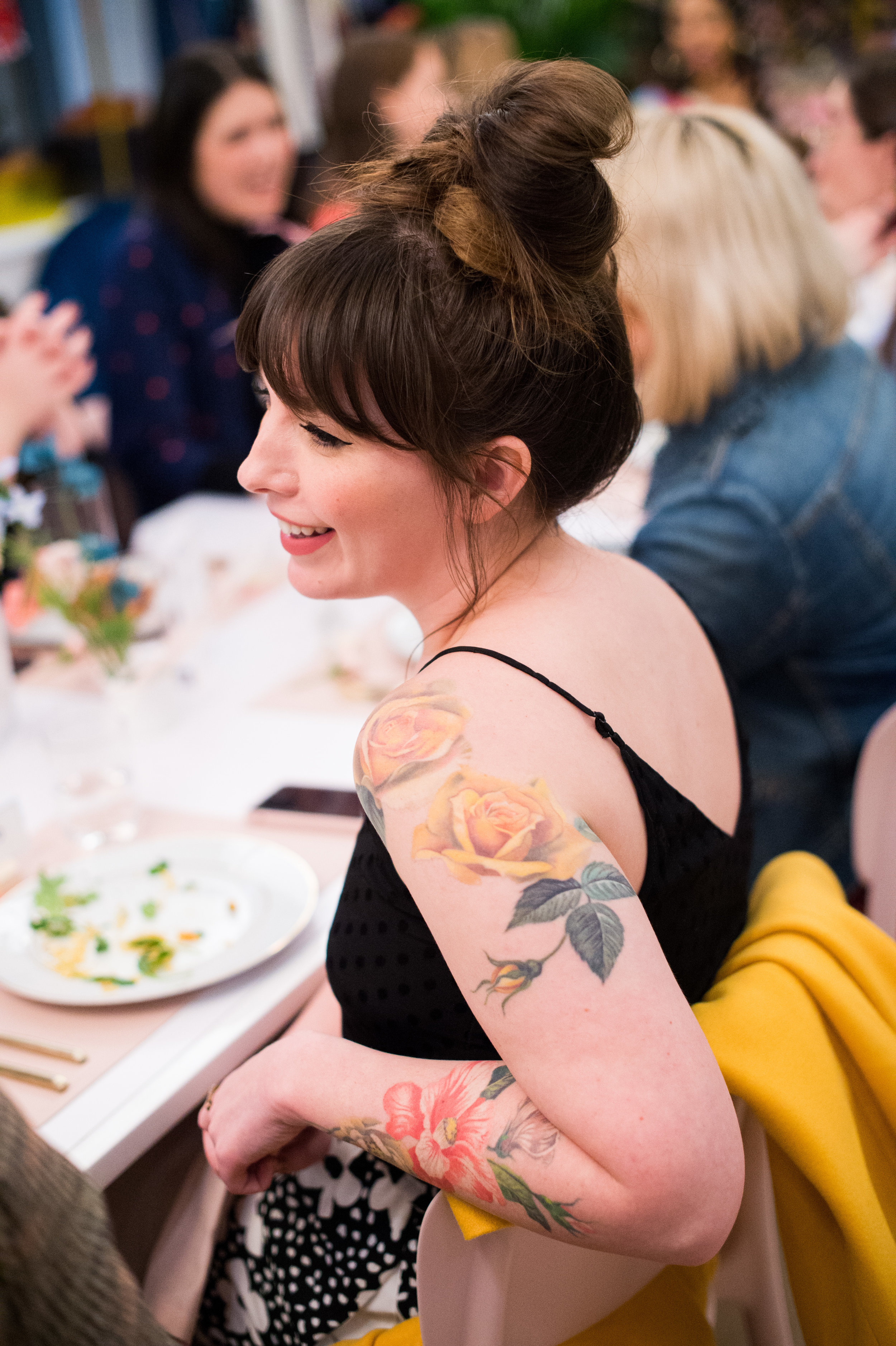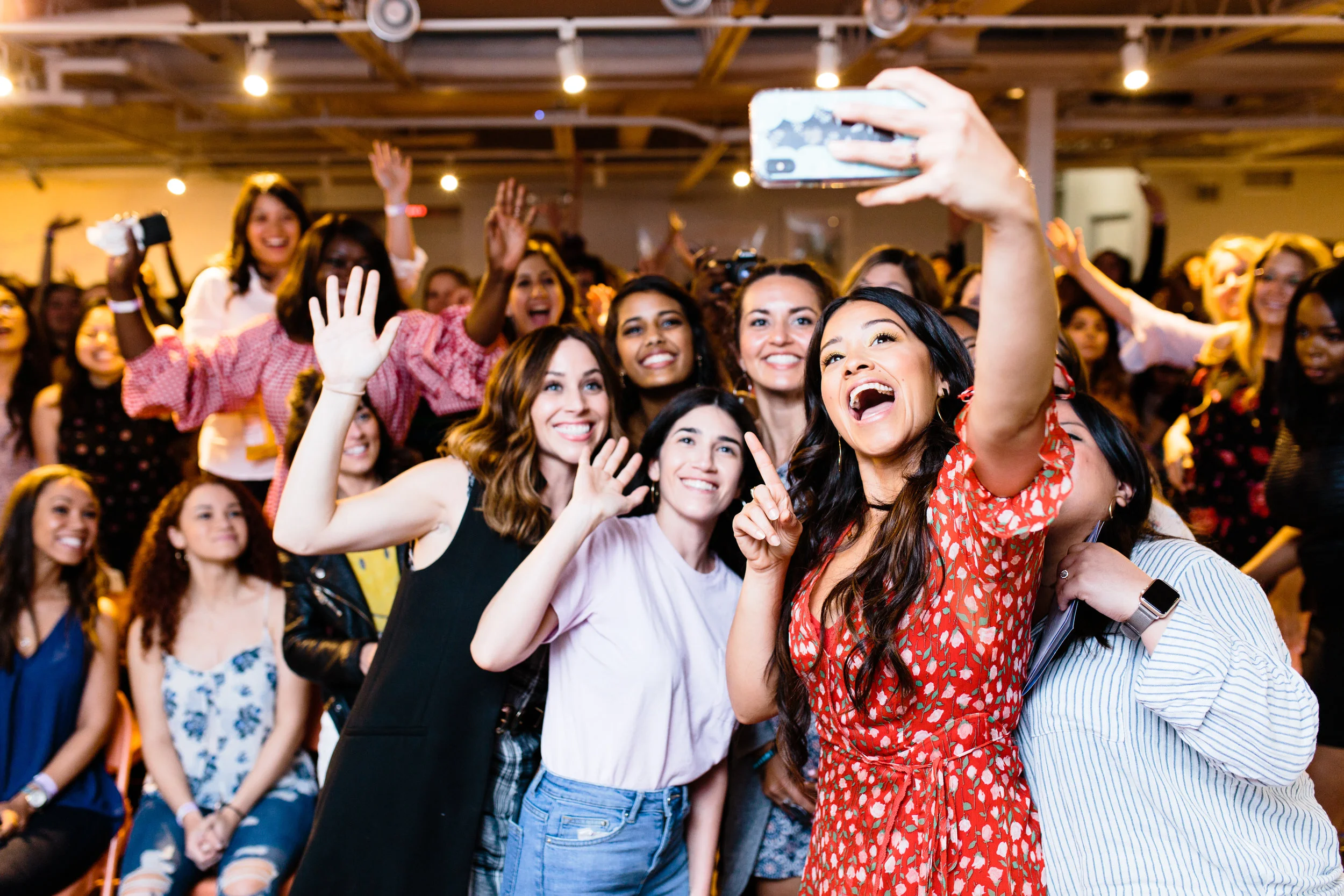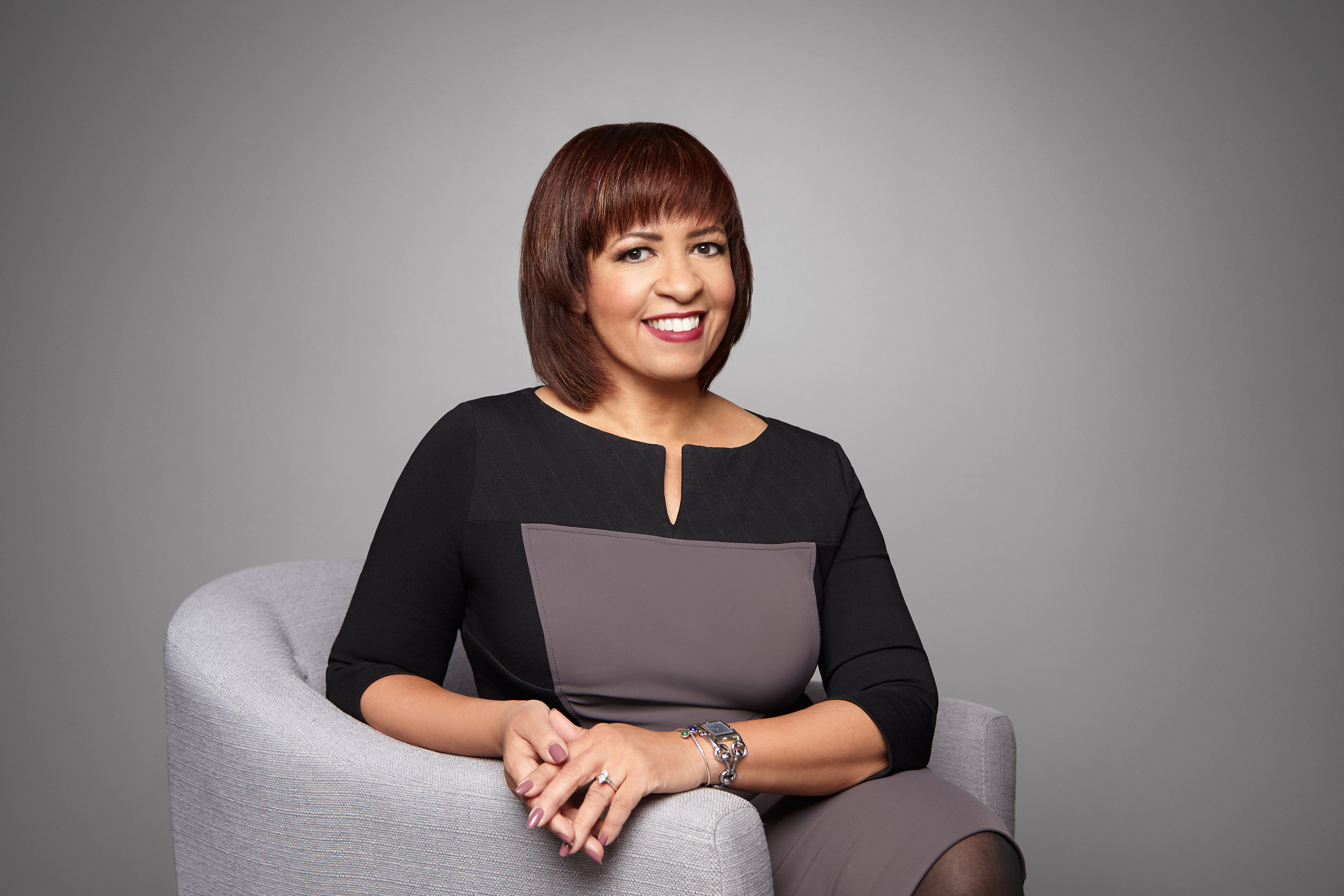Pro Tip: How to Get the Most out of a Slow Season
Don’t panic—get productive.
It’s no secret that being a freelancer is a lot like riding a rollercoaster. Some days are fast and fun while others feel like a punch to the gut while you cascade down into a dark, unknown tunnel as you inch along wondering which turn will happen next. For freelancers, this is what we typically refer to as a slow season. While this part of the rollercoaster can vary from field to field, for most of us it does happen.
For me, it's usually around the holidays. For others, it's the summer. No matter when it happens for you, the best thing you can do is be prepared for it and don't let it get you down. It's inevitable when you’re freelancing and when you find yourself in a slump, so in today’s Pro Tip, we’re sharing a few ways to get the most out of your slow season.
Learn A New Skill
Professional development is something we freelancers have to hold ourselves accountable for. Use the slow season to learn a new skill via an online class or even summer courses at a local university. For videographers it may be learning a new editing platform or getting your drone pilot's license. For copywriters, taking a class to learn better SEO/SEM writing habits. Whatever your trade, there's always something to learn and who knows? What you learn during your slow season may be what helps secure your next client.
Research New Business
It's my personal belief that twenty-five percent of your time as a freelancer should always be spent on networking and new business so that you hopefully never run into a slow season. If you do experience a slump in business, use this time to research and outreach to clients you see a potential working with. Identify a need for your services, find the right person to contact and secure an introductory call.
If you want additional guidance for creating an effective pitch letter, download my Freelancer Starter Kit.
Work For Fun
When was the last time you used your skills for fun? You more than likely started freelancing in your field because it's something you're not only good at, but you enjoy doing. Be your own client for a change and use your slow season to work on something that makes you happy.
Develop Your Brand
Chances are you've spent so much time working with your clients lately that you haven't updated your LinkedIn in a year or created those case studies you wanted to show off on your website or any other you-related task that's been pushed to the bottom of your to-do list. Spend your down time to grow your personal brand. Maybe this is a social media refresh or researching potential speaking opportunities or going to a local networking event. Whatever it is, do it!
Start Your Side Hustle
We should always be side hustling and if you're short for cash during your slow season, this is the time to do it. Mine is going through my closet and selling things on Poshmark. For others, it might be hitting up yard sales and flipping things on eBay (thanks, Gary Vee), signing up as an Uber and Lyft driver or selling personal designs on Society6 and Etsy. There are so many ways to make extra cash these days and what's great about most of these is that they can be done on your own schedule so once your slow season comes to an end, you can keep the side hustle going.
Indulge in Some Self-Care
I can't speak for everyone but when it comes to me and the freelancers I know, we are not the best at putting ourselves first. Use your slow season to work on YOU. Get a massage, read a book, spend your mornings meditating, go for a hike, do whatever makes you happy and helps clear your mind. This can also be a good time to look at the year ahead and start setting goals so when a slow season happens to you again, you’ll be prepared.
About the author: Audrey Adair is a seasoned freelance communications professional and founder of ‘The Scope’ - a platform providing resources and community to freelancers and the self-employed. Connect with The Scope on Instagram and join their email list to receive your free resource, The Freelancer Starter Kit.
MORE ON THE BLOG
Celebrating Self-Love at the Launch of Modcloth's New York City FitShop
“I love all my dualities, all my layers.”
Last Friday, Create & Cultivate hosted a dinner celebrating the launch of ModCloth’s New York City FitShop. We invited some of our fave fashion and lifestyle influencers (like Dylana Suarez, Natalie Lim Suarez, and Hunter McGrady) to check out the new shop, snag some Insta-worthy moments in the *adorable* dressing rooms, and enjoy dinner and drinks together.
The ModCloth FitShop isn’t like a regular store. Instead, you can book an appointment with a ModStylist, who will help you throughout your showroom experience. You’ll try on your picks (in sizes 00-4X), choose your faves, and your stylist will have everything shipped direct to your door—with no shipping costs!
ModCloth is all about loving the body you’re in, so before the dinner, we asked a few of our guests what they love most about themselves….
“My heart. I care—a lot.” - Katie Sturino
“It’s the fact that I’m a multidimensional woman. I love all my dualities, all my layers—that’s what I love most about myself.” - Tracy G
“What I love most about myself is my confidence.” - Hunter McGrady
“I love that I’m a really good dog mom!” - Keiko Lynn
Want to get in on the ModCloth shopping action? You don’t have to live in NYC—the brand has stores in San Francisco, Washington DC, and Austin, too!
This post is sponsored by ModCloth.
Slow Stories: The Big Picture—The Relationship Between Content and Sustainability
Slow Stories: Part 2
This is the second installment in a series on slow content. See the first installment here.
For most modern marketers, content has become an essential component of their overarching digital strategy. But with content's increasingly present role in both our personal and professional lives (in tandem with an often complex social and political landscape), the conversation is now shifting in a thoughtful direction toward considerations of its role in social epidemics surrounding mental health, the evolving news climate, and more.
Since launching the Slow Stories podcast, I've spoken with leading brand-builders who have collectively alluded to the fact that our current consumption habits are forcing new ways of thinking about content's relationship to sustainability. And when looking back at our first season as a whole, my collective takeaway from these conversations revealed three primary elements that make up the slow content movement today:
1. Slow content provides value and purpose
Beyond aesthetics and virality, many of our podcast interviewees defined slow content as being something that offers true value in a densely saturated landscape. Understanding a piece of content's purpose and how it will serve an audience—whether through educating or inspiring—gives it a better chance of leaving a long-term impact beyond just fleeting inspiration in our day-to-day scrolling.
2. Slow content considers data and fact-checking
The immediacy that social media and self-publishing affords us has presented new challenges in how we detect what is real and what is being obscured. To create a credible storytelling environment, our interviewees contend that a return to a slower, well-researched process is critical for all conscious storytellers.
3. Slowing down our relationship to content makes us nicer, more well-rounded people
Finally, a lot of my conversations with these incredible women signaled that there's not necessarily a need to create content all day, every day. As we all work to discern what it is we want to say (and consume), it is equally important to create space to take a step back, recharge, and connect with what drives us offline just as much as what inspires us online.
With these pillars in mind, today's article is going to further expand on the importance of thinking about creating content through a sustainable, big-picture lens. If you find yourself struggling to think about or implement "slow" content in your own strategies, let's look at a similar movement like slow fashion.
At their core, slow fashion brands are commonly known for championing ethical and sustainable production practices, educating consumers on how their pieces are made, and rewriting the rules regarding social and business expectations surrounding their brands. As a result, companies like this have slowly begun to transform the greater fashion industry by creating new standards that are more conscious of both the modern brand builder and consumer's needs. The content and marketing space can surely borrow from these efforts to create a more sustainable landscape for storytelling professionals on both sides of the equation. Below, I've listed a few considerations for brands and content creators to ask themselves—and each other—to enact more sustainable, mutually-beneficial opportunities to create content that has longevity.
1. Set the expectations
The same way a fashion brand would set standards regarding their production process, a content creator can similarly follow suit and establish their own set of best practices when taking on projects. Part of this exercise is educating brands about the importance of ethics—which extends to proper compensation, creative resource allocation, and so on.
2. Ensure consistency and communication
As I mentioned in last month's article, setting yourself up for success in the slow content space begins by laying a long-term foundation in collaboration with your team or client. Part of this is not only communicating what resources you need to bring the content to life, but further educating your team on how it fits into their big picture brand story and mission. When creating enduring content for a brand of any size, it is essential to discuss the end-goal, and what elements must be considered to bring it all to life in an on-brand way. That is where tools like brand books or guidelines come into play to ensure that all relevant details are considered during the production process.
3. Champion the investment in content—and the creators needed to bring it to life
At times, it can be hard for brands to justify the additional spend on custom content (especially when UGC is alive and well). But going back to our slow fashion example, whenever I've found myself in a new business meeting, I often compare the investment in content to investing in quality-made clothing: I'm purchasing a well-made garment and supporting a brand I love as a result. Not only does this demonstrate an interest in championing the brand as a content creator, but it often helps contextualize why putting resources into original (and quality) content is vital for the brand's business goals—and on a more human level—sustaining the support of/relationship with content collaborators.
In a world where trends, expectations, and platforms can change in an instant, thinking about sustainability's role in content isn't always an easy task. I hope this article provides a framework to have necessary conversations with your clients or team to establish systems and tools that allow you to create content that is thoughtful (and provides value) for years to come.
For more musings on slow content, I invite you to follow along with the Slow Stories podcast on iTunes and my monthly column here on the Create & Cultivate blog!
Rachel Schwartzmann is the Founder and CEO of The Style Line LLC. She created The Style Line in late January 2011 via Tumblr and has fostered The Style Line’s brand in its growth since then. Rachel has been featured in esteemed sources including Forbes, Refinery29, and MyDomaine and has also spoken at Create & Cultivate and Columbia University on establishing a unique brand point of view and entrepreneurship. On October 1, 2015, Rachel took The Style Line in a new direction as a boutique content company with the introduction of its slow content agency CONNECT(ED)ITORIAL.
MORE ON THE BLOG
Influencer Pricing Guide: How Much To Charge For Brand Partnerships
Know your worth.
“How much do I charge?” is arguably the most asked question in influencer marketing, and for good reason—the world of influencer content is still relatively new. But if you have set rates and a plan in place, you’ll eliminate a lot of the stress of partnerships and brand outreach.
When it comes to pricing for brand collaborations, there’s no perfect equation. As much as we wish there was a go-to price that works for content across the board, there just isn’t. That said, there are a few best practices you can follow to eliminate the confusion quite a bit.
The Industry Standard Equation:
For social posts: $0.01 x number of followers*
*if “like” engagement is over 2.5%, charge $0.02 or more per follower.
For blog posts: $0.10 x monthly site sessions
Before giving a final fee, run through the requirements for the partnership. Consider an add-on fee if...
You have to include more than 10 images in your blog post
You're giving the brand image rights
You're posting an Instagram Story that drives to your blog post
You’re required to share your blog post on Facebook, Twitter, or Pinterest
You have a manager with an overhead fee
You're working with a brand that requires certain verbiage
You have to travel
You have to buy props
You have to outsource any work (e.g., a photographer or makeup artist)
The project requires a lot of pre- or post-production
The brand requests more than one round of approval, extra images, additional links, or an unusual timeline
Consider the value of each of those asks. When finalizing pricing, think about how much time each task will cost you. Don’t be afraid to charge more if you see yourself putting a lot of extra time into the project!
When should I start charging?
The short answer? Now! If you’re able to offer a brand value, then you deserve to be paid. And the numbers above aren’t hard and fast rules: If you only have 5k followers but your work fits into a certain special niche, you don’t have to stick to the industry standard. If you believe your work is valued at a higher cost, charge what it’s worth.
Too many people think you have to wait until 30k or 50k followers to start charging for partnerships, but when you offer value to a brand, you should be getting paid. Think of it this way: Professional photographers charge thousands of dollars for social imagery, and many of them only have a few thousand followers on Instagram.
How do I have “the money talk?”
Talking about fees is uncomfortable—we get it. But if you have a strong media kit that shows analytics from your social platforms and website, it’ll do the talking for you. Data is the best way to prove a point.
If you’re partnering with a brand you really love and want to build a relationship with, consider being flexible the first time you work with them. Name your price, but don’t be afraid to offer a slightly discounted rate for more posts if you want to build a rapport and make it an ongoing partnership.
Do I need a manager?
Is it time to hire representation? That depends on several factors. Answer the following questions if you’re considering hiring out:
Do you spend the majority of your day answering emails?
Have you hit a wall when it comes to partnerships and outreach?
Do you feel like you just don’t have the right connections?
Do you hate handling contracts?
Do you feel like you know your branding well enough to relay that information to a manager to pitch to brands?
Do you have the financial stability to give up a portion of your commission to a manager?
If the answer to most of these questions is yes, then a manager might be worth considering. They’ll find potential collaborations, handle client back-and-forth, and have those difficult money conversations for you. But that doesn’t mean you’re entirely off the hook: Successful brand partnerships start with showing the value you can bring to a brand, so you still have to come to the table with strong branding, high audience engagement, or unique blog content as selling points.
How do I sell myself?
Consider your brand guidelines, website design, SEO, email and overall content planning. If you're constantly winging it, it’s going to be difficult to set goals for content and partnerships. At Flocke hq, we work on influencer growth through brand and marketing strategy. The best way to feel confident in your content is to have data that shows growth and a larger strategy that outlines your long term goals.
At the end of the day, your personal brand is yours. You call the shots and get to pick how you handle brand partnerships. Remember: Your pricing comes down to the worth of your work and the time you're putting into everything you do. Ultimately, you're the voice of your brand, and no industry standard is perfectly crafted to you.
As you take on this year, we recommend that you create a 30-, 60-, and 90-day content plan and a growth strategy that ensures brand partnerships are always within reach. If you need a little guidance or want to learn more about what performs best, head over to Flocke hq and find out what we can do for your brand!
Tyler Grove and Rachel Broas are co-founders of Flocke hq, a digital marketing consultancy geared solely to help influencers build and scale their personal brands. As influencers themselves (@rachellaurenlucy and @tytygrove), they know the hard work that goes into creating a successful empire off of your own personal brand.
MORE ON OUR BLOG
Good PR: Strong Public Relations is More Than Just Press Releases & Party Girls
What’s PR, and how does it work?
It seems that not everyone is sure of what PR is and how it works, especially in an age where social media rules and that lines between PR and marketing are blurred. Often confused with advertising and frequently associated with celebrities and party girls, PR is a bit misunderstood. Here is some basic info on what PR is and how it works.
PR IS...
PR IS A GREAT WAY TO COMMUNICATE WITH YOUR TARGET MARKET. Done right, PR creates brand awareness and helps to establish a point of difference from the competition. It also can lend credibility to a new company or service. PR coverage is “earned” rather than paid for (like advertising) so that means an unbiased third party, who is deemed “in-the-know” by their audience, is giving their seal of approval on a product or service. Often earned media seems to have more of an impact then advertising, and resonates more deeply with readers.
PR IS ABOUT RELATIONSHIPS. In 2015 those relationships stretch far beyond just the traditional media and include print and digital editors, bloggers, influencers, stylists, writers, producers, on-air talent and a slew of other interesting titles. Years ago PR was a bit more defined but with the introduction of social media, lines have been blurred and the boundaries between PR and marketing have softened. There is far more interplay and overlap. PR covers a lot more ground so it’s important to constantly be reinforcing existing relationships and establishing new ones.
PR IS A CHANGING INDUSTRY that requires creativity and adaptability. The digital landscape is constantly evolving and the end consumer is now used to quick nuggets of info and short burst of news that can be easily digested. In addition to the ever-important feature story, media coverage in things like “listicles”, digital/shoppable product roundups, influencer partnerships and ongoing social media have become an important part of any PR and marketing initiative that can have as much impact as the most established traditional print/broadcast coverage.
PR IS ABOUT GETTING NOTICED. It’s competitive out there. Even if you have relationships you are still up against a lot of other people/product/companies/ services and many are just as fabulous and ingenious as whatever you are bringing to the table. It’s about having what you do and how you do it catch the attention of the chosen intermediary. In overcrowded inboxes, sometimes the subject of the email is as important as the actual content! It’s all about standing out.
PR IS NOT…
PR IS NOT ADVERTISING. It’s earned media a.k.a editorial coverage. True editorial coverage can’t be purchased. It’s earned. It’s won! Via lots and lots of time spent strategizing, emailing and talking. While PR isn’t paid for it also isn’t necessarily free either. Publicity requires the expenditure of mass amounts of time and effort by an in-house point person or a partnering agency. While you may not be spending dollars doing a media buy it will require some measure of capital investment to cover the time commitment it requires to create the interest.
True editorial coverage can’t be purchased. It’s earned. It’s won!
tweet this
PR IS NOT EASY. For every bit of media coverage that is actually featured there were at least a zillion pitches that went out that were passed on. In PR you get way more “no’s” than “yes’s”. It’s takes an almost obsessive level of outreach, creativity and strategy to secure any press coverage. Especially if the brand/product is new or unknown. Diligence, persistence and a thick skin are required to be successful along with stellar relationships and the ability to stay on top of opportunities without being annoying. Don’t assume you will have a cover story or a national placement right away. It’s an ongoing process but the results are worth it.
PR IS NOT ABOUT ONE-HIT-WONDERS. While there are those media opportunities that can change a business overnight, PR is largely about ongoing outreach and consistent coverage. It requires imagination and the ability to make something that isn’t always new or even newsworthy interesting. PR is meant to be a long-term investment and shouldn’t be viewed as a quick fix. Seeding a brand and building momentum with the media takes time, creativity and even a bit of luck.
PR IS NOT JUST ABOUT PRESS RELEASES and distribution services. Back in the day, a traditional press release would be written, pitched and then shared via a distribution service. With the rise of social media and the internet, a press release has become less important. It’s still a worthwhile informational tool to have in your arsenal but image heavy, copy-light outreach is preferred. Media contacts are inundated with information and want “snackable” bursts of info that they can review and decide on quickly.
Jessy Fofana founded La Rue PR over ten years ago after successfully directing public relations and marketing initiatives for an impressive list of well-known fashion, home décor, lifestyle and cosmetics brands and retailers. Having worked in both digital and print magazine publishing as well as co-founding a fashion and lifestyle brand that she later sold, Jessy and her team at LaRue PR understand exactly what it takes to create the kind of take-notice, multi-faceted campaign that delivers brand-changing buzz. With an experienced team of professionals, LaRue PR covers all the bases including print and digital media coverage, influencer relations, synergistic brand partnerships and more. LaRue PR provides the skill and experience of a large agency with the creativity, dedication and affordability that can only be offered by a boutique firm.
MORE ON THE BLOG
No MBA, No Problem: Enroll in B-School & Watch Your Business Profits Soar
If you’re a business owner who’s looking to increase profits (and let’s be honest, who isn’t?), we’ve got a surprise in store for you!
We (and a lot of C&C readers!) are huge fans of Marie Forleo’s B-School, an eight-week online learning program for big-hearted creatives who want to build a meaningful, profitable business online. The program teaches smart, effective online marketing strategies to business owners who want more sales and more impact from their online presence. Whether you’ve just launched your business or you’re a seasoned pro looking to build more robust marketing, B-School can help you craft strategies that truly pay off.
The program is led by marketing expert Marie Forleo, creator of the award-winning show MarieTV. Named by Oprah as a thought leader for the next generation, Marie and her team host weekly office hours for all B-Schoolers, so you’ll get direct access to the best in the biz.
Interested? Read on for the deets.
The Program
Once you enroll in B-School, you’re a member for life. You can take the program below for free each year, as long as you like.
Module 1: Clarify Your Profit Plan
Clarify your business vision and goals, understand your numbers and profit plan, identify your ideal customers and craft a unique strategy to connect with them and set yourself apart from the competition.
Module 2: Create a Website That Converts
Learn everything you need to know to make sure your website serves your top business goals: choosing the right web platform, avoiding costly mistakes with plugins, programmers and designers, optimizing your site to maximize lead and sales conversions and making sure that you have the control you need to change your website on the fly.
Module 3: Design Your Content & Communication Plan
Develop a strategic and achievable plan to stay connected to your audience, attract new fans and promote your offerings — based on your unique strengths. You’ll also learn how to design and deliver your newsletter, blogging do’s and don’ts, how to create content that helps increase your sales, the key to choosing the right ratio of content vs. promotion and how to make smart decisions on what, where and how frequently you publish (hint: it’s probably less than you think!).
Module 4: Nurture & Grow Your Email List
learn how to strategically and intelligently grow your email list, why more traffic isn’t always what you need, the importance of marathons and sprints for your list building efforts and how to leverage the power of parallel audiences to rapidly increase your list growth.
Module 5: Deliver Products & Services That Customers Love
Learn how to strategically and intelligently grow your email list, why more traffic isn’t always what you need, the importance of marathons and sprints for your list building efforts and how to leverage the power of parallel audiences to rapidly increase your list growth.
Module 6: Timeless Marketing For Modern Entrepreneurs
Learn a simple method to find out exactly what your customers really want and how to position your offering to maximize sales. Plus: why proactive sales prevention can be your biggest sales booster, the 5 factors that control how much you can charge, the 7-step checklist for high converting offers, and — if you plan to offer any program online — a deep dive punch list for the do’s and don’ts of online program delivery.
Pricing
The investment for B-School 2019 is $1999. The program offers a payment plan (12 monthly payments of $199) and holds a scholarship contest every year.
Testimonials
“I charge premium rates starting from $250 and up to $10,000. I've been featured on podcasts and blogs like Tiny Buddha. This business didn't even exist before B-School!” - ELIZABETH KELSEY BRADLEY, writer
“I have an MBA and a decade of corporate experience and this program still taught me something new in every module. I had to be brutally honest about what my real strengths were, who I really wanted to work with, and how much my services were really worth.” - LINDSAY ROSELLE, entrepreneur
“The initial launch generated $70,000 in sales. Now over 240 people have done the fishing course equating to $265,000 in revenue in our first year. WOW!” - KAREN RUDKIN-MOODY, marketer
Want a sneak peek for FREE? Watch Marie’s 3-part video training series that shares the framework for running a business with successful online marketing, from brand positioning to profitability.
B-School is a valued C&C partner. We may earn a referral fee if you purchase through our link.
What to Expect at Our Austin Pop Up
Get ready for Austin!
Austin, we’re back! You showed up for us last year—more than 6,000 of you RSVP’d to see our keynote speaker Gina Rodriguez drop some knowledge—and we can’t wait to come back and do it even bigger and better at this year’s Austin Pop Up, presented by Mastercard.
On March 10, we’ll be hosting another FREE one-day pop-up event with amazing panels, delicious food and drinks, shoppable pop ups, and everything else you’ve come to know and love about Create & Cultivate events. Here’s what you can expect this year…
Location
The Allan House
1104 San Antonio Street
Austin, Texas 78701
Parking
We highly suggest you plan to use a ride-share service! There are street parking options and a few paid lots nearby, but availability is not guaranteed.
What to Bring
Your ID! We’ll have drinks onsite for those 21 and up.
Arrivals
Doors open at 10:30 a.m. Space is not guaranteed, so arrive early (seriously—this event will fill up fast!). The first 150 guests will receive a gift bag full of goodies!
Want to skip the line?
We’re offering our #createcultivateATX attendees early access to our new Create & Cultivate Insiders program before it launches on April 2nd. Sign up today and use your membership to get front of line access to all of our events for the year. Did we mention it also unlocks some pretty amazing perks? Get excited to gain access to our entire archive of panel videos, monthly digital mentor sessions where you can join live to ask your questions to some of the best in the biz, plus an entire library of career worksheets & downloads that we’ve created to help you THRIVE.
SHOPPING, FOOD, &
FUN IN THE SUN
We’ve partnered with some of our favorite brands to bring you amazing shopping experiences, to-die-for photo ops, and delicious food and drinks! Peruse each booth to find your new go-to brands for home, beauty, and fashion!
LIFESTYLE
Our presenting sponsor is here to talk all things small business. Stop by to snap some ‘gram-worthy moments that’ll make all your friends at home jealous!
Have you experienced the new Glade® Essentials Room Mists that are lightly layered and infused with essential oils? Try a spritz before adding some flair to your manicure at a statement nail bar—then show it off in a fun photo op!
FOOD & BEVERAGE
Need an afternoon pick-me-up for a day full of panels? Chameleon will be serving organic black nitro cold-brew coffee alongside local jeweler Nina Berenato, who will be creating custom embossed keychains for guests!
Cool off with a Lemonade Freeze from Not Your Father’s, our favorite boozy root beer brand! Find both flavors locally and across Texas at HEB.
Stop by CORE’s upside-down pop up to hang out and hydrate!
Stop by the Crown Royal booth to build a care package for the Purple Bag Project, a partnership with non-profit organization Packages From Home. You’ll pack uplifting notes, food, and personal care items into repurposed Crown Royal bags to send to American military heroes overseas.
We’ve got everyone with dietary restrictions in mind! Come sample Lifeway Plantiful, the first plant-based probiotic beverage made from organic and non-GMO pea protein with 10 vegan kefir cultures. It’s dairy-, gluten- and soy-free.
Snap some IG-worthy pics in La Croix’s interactive booth and (duh) pick up your favorite flavor, too.
AUTO
Stop by the Volvo pop up to check out their brand new S60! It’s kind of our dream car.
FASHION & BEAUTY
Does your hair need a refresh? Stop by the Batiste booth to get styled by a pro, then show off your new look in a fun photo op.
Get your ‘gram on, then grab some goods! Social media is your currency at the Paige Social Shop, so snap that IG and get free swag like scrunchies, shirts, and pins!
Stop by Roxy’s mini shop to see the latest swimwear, dresses, and easy tops. Grab a reusable straw and custom pouch, then stop by the “Make Waves, Move Mountains” wall for the perfect photo op.
We’ll have stylists on site to give your hair a quick makeover so you’re ready for photo ops all day long!
SCHEDULE
Power Breakfast | 10:30 - 11:00
Start the morning off with coffee & conversation with the best in the biz before a big day of programming. We’ll be serving up cold-brew coffee and a light breakfast from Chameleon Cold-Brew, Lifeway, and Purely Elizabeth.
Panel: Marketing Masterclass | 11:00 - 12:00
Hear from marketing masters on growing a cult following and building brands people love.
Panelists:
Erin Silver | Head of Social Media at Volvo
Adrienne Bosh | Founder of Sparkle & Shine Darling
Carrie Colbert | CEO of CarrieColbert.com
Claire Fountain | Mental health advocate & creator of Trillyoga
Sarah Kunst | Founder of Cleo Capital
Moderator:
Shira Lazar | Media Entrepreneur
Fireside Chat | 12:00 - 12:30
This intimate one-on-one panel gives you the opportunity to hear the ins and outs of the career of a super-successful woman in business. We can’t wait to share our guest for this chat—you won’t want to miss it!
Panel: Content Economy | 12:30 - 1:30
We’ll pass the mic to some of our favorite content creators to hear how they’re making waves online and IRL.
Panelists:
Paola Mathe | Founder, Finding Paola & Fanm Djanm
Dani Austin | Founder, DaniAustin.com
Camille Styles | Founder & CEO, Camille Styles
Jen Pinkston | Founder, The Effortless Chic
Genevieve Padalecki | Founder, Now & Gen
Moderator:
Reesa Lake | Partner, Digital Brand Architects
Panel: Real Time, Real Talk | 1:30 - 2:30
How do brands keep up with the constantly-shifting digital landscape? Listen to these ladies share their secrets for social and more.
Panelists:
Jessi Afshin | Founder, Darling Detail
Agatha Ashiofu | Founder, Irony of Ashi
Eman | Makeup Artist, Entrepreneur, and OGXpert
Bruna Schmitz | Roxy Pro Surfer & Ambassador
Courtney Shields | Founder, Bring Your Own Beauty
Sophie Kelly | Sr. Vice President of North American Whiskeys Portfolio, Diageo
Moderator:
Maxie McCoy | Author and speaker
Lunch | 2:30 - 3:30
Sure, Texas is known for its BBQ, but we’re challenging you to think outside the box. Why would lunch be any different? We’ve got something for everyone, including vegetarians! Grab some lunch from Beyond Meat, bottled water from CORE and delicious malt beverages from Not Your Father’s, then get your WorkParty book signed by author Jaclyn Johnson!
And be sure to stop by our Crown Royal bar for cocktails throughout the day!
Priceless Conversations, Powered by Mastercard | 3:30 - 4:30
We’ll gather our small business advisory to chat about all the trials and tribulations of running your own biz. Stay tuned to see who’s on the advisory—you’ll definitely want to hear from these talented ladies!
WorkParty Podcast Live | 4:30 - 5:00
Watch a live taping of WorkParty the podcast, one of the top-rated weekly business podcasts on iTunes!
Keynote Panel: Create & Innovate | 5:00 - 6:00
Learn how to build a brand in a crowded marketplace with advice from women who’ve done it themselves.
Panelists:
Paige Adams-Geller | Founder & Creative Director, Paige
Camila Alves | Founder, Women of Today
Julie Smolyansky | President & CEO, Lifeway
Sami Fishbein | Co-founder and COO of Betches Media
Keynote Conversations | 6:00 - 6:30
We’ve got an amazing keynote speaker coming soon—you’re gonna want to RSVP ASAP so you don’t end up on the waitlist for this one!
Happy Hour | 6:30 - 7:30
Cheers to an amazing day! Grab one last beauty treatment, shop the pop ups, and #treatyourself with some bubbly courtesy of Chandon in an Instagrammable (duh) Tossware glass—you deserve it!
FAQs
Can I leave and come back?
Yes, but as soon as you leave, we’ll let other people in—which means if you come back, you’ll have to wait in line again!
Can I save a seat?
Unfortunately, no. First come, first served.
I didn’t RSVP. Can I still get in?
You must RSVP to gain entry! Don’t forget!
Am I guaranteed entry?
We cannot guarantee anyone entry. Please line up early to secure your spot!
Will I have fun?
Duh! We’re throwing the best #WorkParty in town.
Who's ready? Comment below to say hello to fellow attendees!
MORE ON THE BLOG
Making Moves: Award Noms, New Funding, & Netflix Pickups
These ladies are makin’ moves!
This week was a doozy for women in business! Below, we’re sharing big deals, award noms, and pre-seed funding secured by badass ladies who know what they want and aren’t afraid to go for it. Check ‘em out below!
Girls’ Night In, our favorite self-care newsletter by #createcultivate100 alum Alisha Ramos, has raised a pre-seed round of $500,000!
Netflix has picked up the “momedy” sitcom Workin' Moms by Black-ish star Catherine Reitman. The series, which has aired on the CBC network in Canada since Jan. 2017, follows four 30-something women in a mommies' group as they juggle work, home, and love.
CEO Katrina Lake’s wildly-successful personal styling box Stitch Fix was featured in the #5 spot on Fast Company’s Most Innovative Companies list this week. The company generated $1.2 billion in its fiscal 2018.
Li Li Leung, currently vice president of the NBA, has been named president and CEO of USA Gymnastics. Formerly a college gymnast at the University of Michigan, and the sport’s crisis with Larry Nassar compelled her to step into the role.
Minyon Moore, Donna Brazile, Yolanda Caraway, and Leah Daughtry, authors of For Colored Girls Who Have Considered Politics, have been nominated for an NAACP Image Award. The book gives a behind-the-scenes look at the authors’ 30+ years working in politics.
MORE ON THE BLOG
Professional Opinion: The Business of Breaking Up a Partnership
Breaking up with a business partner can be one of the most painful breakups you'll ever go through—and it comes with a price tag. Here, survival tips from someone who's been there and lived to tell.
*Written anonymously to protect the NOT so innocent.
I remember sitting there, just highlighting, highlighting and highlighting, so many numbers, so many charges, so much money—just gone. When we started the company together, it was thrilling. We were young, ambitious, hungry and starting something with a potential magnitude we didn't know or could even fathom. That’s how a lot of companies start, as an idea, a collaboration. Then all the sudden, you're in it.
The co-founder, business-boss-gal-pals model is popular—see Gilt, Rent the Runway, Birchbox and Proactiv—and it makes sense why. Everyone loves a partner in crime, you can do double the work and have double the fun, and that feeling of not being alone is, well, a good one. Partnering up with a friend can work out amazingly. Or it can not.
Cut to a few years into your business, employees, money and tensions run high, and while you may think your roles are clear as can be, your word means nothing unless it's in writing. Breaking up with a business partner might just be the most painful breakup you can go through—because this one comes with a price tag.
My story is not unique, but when it happened to me it felt like the world was crashing in. It was hard to breathe, difficult to believe that someone I trusted, and even cared about, could be taking money from a company that we had built together from the ground up. My gut had been telling me for months that something wasn't right, but I assumed it was more a personal issue and that no matter what was going on between us, we were both equally invested in the business.
Wrong.
It eventually came to light that not only was my partner not managing our finances, but actually manipulating them. This included racking up unrelated business expenses, disregarding all things tax related, and straight up embezzling money. I was devastated, and what was worse, I had no idea what to do next. I felt ashamed and scared to talk about it—I thought it had to be a reflection on me and how I operated a business. It took me a few years and several conversations to get over it, and through it all, I realized that I wasn't alone. One business partner taking advantage of another happens, and it happens a lot. Partnerships split up and morph all the time and for all kinds of reasons. Being able to step back back and realize something isn't working is a part of being a mature business pro.
Trusting someone is not a flaw but a positive characteristic.
tweet this
The hardest—and yet ultimately most helpful—thing for me to accept was that it was NOT my fault. Trusting someone is not a flaw but a positive characteristic. It takes trust to build a business, and had I been skeptical and suspicious from day one, we would have never gotten off the ground. Moving on and away from a partner does not have to mean the end of your business, and often, it will actually turn out to be the beginning of something great.
I hope this never happens to you, but if it does, here are my tips for pulling through, and maybe even coming out on top.
Don’t over react.
When I found out, I wanted to freak out, confront and deal with it head on, but cooler heads prevailed. Take a deep breath, and assess all the details of the situation to 100% ensure you are in the right before initiating a confrontation.
Get your team in place.
I was lucky enough to have an incredible lawyer and forensic finance team that helped shape my case and bring to light things I would have overlooked. Beyond that, they were able to deal with the personal communication that I wasn't emotionally prepared to handle.
Handle clients and employees with care.
The business of breaking it to your employees and clients is extremely crucial. I personally called each client to explain that my partner and I were parting ways. I followed up with an email of how the transition would work and assured them we were ready to take on the challenge. When you do all of this, resist the urge to talk bad about your former partner and keep the details of why you're splitting to a minimum.
Tune out the 'I told you so.'
One of the hardest things was hearing from many friends, family, business contacts and clients who swore that “they saw this coming.” I acknowledged that they meant well, but just tuned it out. Beating myself up wasn't going to help me move forward, and I had to focus on what was right in front of me.
Revise and Renew.
As roles and responsibilities change in your partnership, update your operating agreement. Even when everything is smooth sailing, it is crucial to know who is in charge of what.
Move on and UP.
I was nervous about keeping the same business name and dealing with the "How is so and so?" questions, but it gets easier and YOU get better. When someone asks a question about the past, politely change the subject to something in the future that you're really excited about.
MORE ON THE BLOG
This CMO Shares Why Relationships Matter in the Business of Beauty
“Ask yourself, ‘How can I add value to others via a beauty experience?’”
When it comes to the world of beauty, trust is paramount. That’s why we were thrilled to partner with Mary Kay, a longstanding leader in the industry, at our Miami Vision Summit this winter. We invited attendees to get dolled up in the Mary Kay booth, where makeup artists were on hand to use the brand’s new Chromafusion Collection to give guests a glam experience. Below, we chat with Mary Kay Chief Marketing Officer Sheryl Adkins-Green on why trust, relationships, and doing the right thing have served her well in the beauty business.
From a marketing expert’s perspective, how has Mary Kay built trust and authenticity over so many years? As we like to say, it’s one of the OGs in the beauty industry and the community is stronger than ever.
The Mary Kay business is grounded in the values and principles that Mary Kay Ash believed were essential to building relationships. Values such as treating others the way you want to be treated, helping others without expecting anything in return, and perhaps most importantly, integrity – doing the right thing. These timeless principles form the core of a people-centered culture that has been embraced by Mary Kay Independent Sales Force members and employees for more than 55 years.
How has being a part of a fiercely female-led company had an impact on the success and growth of the business?
Mary Kay is a company that was built by a woman for women. Our mission of enriching women’s lives resonates around the world because as women achieve their goals, they contribute to the success of their families and their communities. The Mary Kay business has grown by providing women with an unlimited opportunity to achieve their goals and help other women achieve their goals. Empowered women empower women!
You introduced the Chromafusion Collection to guests at our Vision Summit. Tell us about its long-lasting benefits.
The Mary Kay Chromafusion Collection was exclusively developed by Mary Kay to deliver richly pigmented eye shadow, blush, highlighter and contour powders in shades that last all day. It’s color without compromise that wears through work, workouts and weather. Chromafusion Eye Shadow is 12-hour color for the 24-hour woman.
Can you share one woman who paved the way for you to be where you are today?
Of course, I would not be in my role, supporting the success of millions of Mary Kay entrepreneurs, had it not been for the determination of Mary Kay Ash. In regard to my career journey, I benefited greatly from the mentorship of Paula Sneed, an executive I was privileged to work for at Kraft Foods. Paula Sneed paved the way for many women in both Harvard Business School and corporate America.
“Consistently articulate your value proposition—that is, how do you, your product, or your service add value to your target audience in a way that distinguishes you and your offering from others?”
You’ve built a sense of community in different ways with your audiences & customers. If you can give away one tip for building a strong brand to consumer relationship, what would it be?
The key to successful brand building is to clearly and consistently articulate your value proposition - that is, how do you, your product or your service add value to your target audience in a way that distinguishes you and your offering from others?
What advice would you give to young professionals trying to break into the beauty industry?
My advice to young professionals seeking careers in the beauty category is to understand that beauty is more than makeup. Beauty is more about what people feel than what they see in the mirror. When pursuing a career in beauty, I believe it’s best to start with the questions: How can I add value to others via a beauty experience? What are my strengths? How can I leverage that strength to help someone not just look beautiful, but feel beautiful?
Where do you go to get inspiration?
I find inspiration from a broad cross-section of people, places and things. I am particularly inspired by women’s stories and conversations. I love learning the “why” behind the “what.” One of my regular go-to resources of personal and professional inspiration is Valerie Burton, a life coach, author, motivational speaker and entrepreneur. I love sharing her books and blogs!
What’s on your 2019 vision board?
One picture on my 2019 vision board is a parade of pink Cadillacs driving through downtown Dallas this summer. This year marks the 50th anniversary of the pink Cadillac that was awarded as recognition of outstanding sales success. I’m envisioning a record number of Mary Kay Independent Sales Directors rolling through the city, celebrating their success!
C&C Classifieds: Be Social, Kris Carr, Brand Assembly, & More!
Looking for a job can be rough. Let us help.
Looking for a job can be rough. Let us help.
Be Social - West Hollywood, CA
Kris Carr - Remote
Brand Assembly - New York, NY & Los Angeles, CA
Verb House Creative - Austin, TX / Remote
Create & Cultivate - Los Angeles, CA
Nova Peaks - Denver, CO
Creative Circle - Houston, TX
The Estée Lauder Companies, Inc. - Los Angeles, CA
Dirtybird - Los Angeles, CA
Modcloth - Los Angeles, CA
Pixi Inc. - Los Angeles, CA
rag & bone - New York, NY
The 10 Most Important Things You Need to Know About Gen Z
You can't just make stuff, you have to stand for something.
For the last decade Millennial has been the word on every marketer's tongue. The most studied generation in history, they have been prodded and dissected, widely discussed and harangued for navel gazing tendencies and pursuit of dreams.
But not anymore! The hot seat is ready and waiting for Gen Z, the group born 1995 to present, which currently outnumbers Millennials by about 1 million in the United States. Hardly a carbon copy of what came before, in many ways Gen-Zers are the opposites or extreme versions of Millennials. They grew up during Occupy Wall Street, the Recession, and have had tech at their fingertips since birth.
Here are some of the current most important #facts about the Gen Z.
THEY ARE FRUGAL
Raised during the Recession by parents who felt the pressure of a weak economy, Gen Z is on top of where and how they are spending money.
Currently they are spending less than Millennials and are less concerned with buying labels.
BUT THEY LIKE GOOD VALUE
They may not be spending as much, but they are spending smart. The average Gen-Zer gets a weekly allowance of about $16, so they have some buying power.
It's also why brands like Spirit Airlines are preparing for Gen Z to become the dominant group of travelers by rebranding itself as an ultra-low-cost carrier. The airline is offering bargain basement fares with zero frills. Gen Z is willing to accept less, but they want to know exactly what they are getting.
Especially if it means flying from NY to SF for less than 200 bucks.
THEY DON'T TRUST BRANDS
Gen Z has grown up in an age where all information is available. Blogs that take apart brands and online reviews that don't skimp of the dirty details of products.
Emerson Spartz, CEO of the digital media company Dose told Fast Company, "They have the strongest bullshit filter because they've grown up in an era where information was available at all times."
What they've seen, from the latest Wells Fargo scandal to the VW emissions issue is that big brands are not to be trusted and brands will have to work hard to earn Gen Z's affection and loyalty.
THEY DO THEIR OWN RESEARCH
No information is secret. If a brand thinks they can pull the wool over Gen Z, they should think again. This is the generation that grew up with technology. They know how to price compare, they know how to sniff out a deal, a rat, or a scam, and they are more comfortable in front of a computer than any previous generation.
That means if you're offering "the lowest fare" you better be able to back it up or Gen Z will take their business elsewhere.
THEY DO TRUST PEOPLE
While they are wary of brands, they are less wary of individuals. Gen-Zers are more likely to convert when they see one of their favorite social media influencers partnering with a brand.
Steven Lammertink, the founder and CEO of the Cirqle, told Fast Company, "Generation Z is more willing to hear a brand's story when it is part of a narrative their peer is already telling."
Loud, in-your-face marketing is a thing of the past too. They like more subtle messaging. It's why brands are banking on major social media influencer deals.
"Brands are banking on major social media influencer deals."
Tweet this.
Bloggers like Aimee Song who landed an unprecedented paycheck for being the face of Laura Mercier.
AUTHENTICITY IS KEY
Even though they understand that these are paid opportunities, they believe that social media influencers are making conscious decisions about who they partner with.
Influencers like Ingrid Nilsen who has said that "You have to know where you stand and what you feel comfortable with. Sometimes what I’m comfortable with is being uncomfortable," she says, "especially if it means that I’m moving in the direction of emotional bravery."
It's sentiments like this that make Gen Zers trust people over brands.
THEY DON'T WANT TO BE WALKING ADVERTISEMENTS
Logo mania is over, for now.
It's why fashion brands like American Eagle Outfitters have seen sales and profits rise, where other major retailers are struggling. Gone are the eagle logos and they are promoting their new look on street-wear Instagram's like hypebeast.
That's not to say it doesn't come with pushback. Commenters were quick to point out that the pic was paid for. (See: they do they own research.)
SELFIES ASIDE, THEY AREN'T NAVEL GAZERS
They've heard the stats, the know the realities. 2015's graduating class was the most indebted in history and 2016's is primed to follow in its path. For Gen Z, college is less a time about self discovery and more the time to really hone in on their future. They don't have time to pussy foot around.
"For Gen Z, college is less a time about self discovery and more the time to really hone in on their future."
Tweet this.
That means, internships during college and working to make sure they land jobs after college. If Millennials were the generation to take a semester off, Gen-Zers might be the one to graduate a semester early.
They are highly competitive and know that the job market is still rough. They also have major concerns about higher education. Sixty-six percent of Gen-Zers say their number one concern is drowning in college debt, and 75% say there are ways of getting a good education besides going to college.
THEY AREN'T LURED BY "NEW" TECH
That line around the block for the new iPhone 7? Maybe don't except Gen Zers to be in it. For Gen Z, tech is more of a tool and less of an obsession. They aren't quite of the "if it ain't broke, don't fix it" squad, but they also don't JUMP on a new, very expensive new tech toy simply because it's new. They grew up with this stuff and aren't WOW'd by tech that works pretty much like old tech.
They're more savvy and they shop smarter.
YOU CAN'T JUST MAKE STUFF, YOU HAVE TO STAND FOR SOMETHING
They don't need brands to build communities, they can do that themselves. And they don't need brands to create their identify, they've got that on lock. But they do want brands that align with their modern values and ethics.
What research has shown is that Gen Z is the least judgmental and most open-minded of all generations. They were born into Obama's Presidency. Gay marriage will be the norm over their lifetime and they've seen more women in power than any previous generation. They are less concerned with putting people in boxes and diversity matters.
They want the freedom to be themselves and will support brands that get that.
What are some ways you're incorporating Gen Z into your business plans? Share in the comments below!
MORE FROM OUR BLOG
Money Matters: Daina Trout, CEO of Health-Ade Kombucha
“There is no shame in wanting money. Money gives you freedom to live the life you want.”
You asked for more content around business finances, so we’re delivering! Welcome to the first installment of Money Matters, our newest series dedicated to giving you an inside look at the pocketbooks of some of your favorite CEOs and entrepreneurs. In this series, you’ll learn what successful women in business spend on offices spaces and employee salaries, how they knew it was time to hire someone to manage their finances, and their best advice for talking about money.
Our first Money Matters guest is Daina Trout, CEO and co-founder of Health-Ade Kombucha. Daina is a huge advocate for being forward when talking numbers, so she’s an ideal woman to kick off the series. Below, she shares her financial story.
Where do you think is the most important area for a business owner to focus their financial energy?
First, you want to focus on growth; second, on profitability. On growth: It is very tough to get your company off the ground and to a place of increasing revenues from scratch, and it’s going to take every piece of your being to get it there (so you can’t be distracted by much else). Also, my experience has been that momentum is a real thing. The faster your company grows today, the faster it will grow tomorrow (at least in the beginning). It’s all hands on deck, full pedal-to-the-metal speed.
On profitability: You don’t want to wait too long for this, else you will be constantly raising money and diluting yourself, feeling like you’re in a never-ending rat race. But at the same time, nobody cares about a profitable business that isn’t growing, so you don’t want this to be your first #1 priority (unless you have one of those rare businesses that can do both from the start). You want to be an owner of a company that is growing and tightening at the same time. It’s important to strive for that balance.
“You want to be an owner of a company that is growing and tightening at the same time. It’s important to strive for that balance.”
What was your first big expense as a business owner?
Two things: People and manufacturing equipment. People do the work so you have to invest here to have a good business. I often wonder, though, if co-packing is better than manufacturing in-house. The capital intensity of owning your own manufacturing is seriously something to consider.
How did you decide what to pay yourself?
I talk about this all the time to fellow founders—it’s a major issue. And I think most are underpaying themselves. In the very beginning, this is hard, because you don’t usually have investment or profits, so you’re last on the list (we paid ourselves a meer $300 a month in the beginning, which covered basically nothing). Once you get investment or profits, though, it’s important to re-look at your compensation and your role. Think about what it would cost for the business to hire for this role in the marketplace. An experienced CEO in LA makes $250K+ on average. This probably doesn’t make sense for a business that has just received its first round of funding, and you hopefully have a ton of upside in equity, so you want to consider that. Also, you probably aren’t as experienced yet, so your salary would be below average. That said, I don’t think $30K makes sense either. Be careful not to be a sacrificial lamb for your company here. A sensible pay that considers your job requirements, your value, and your equity situation should be budgeted for the business. Each year, you should re-calibrate until you get to the average or your goal at a reasonable time.
“Be careful not to be a sacrificial lamb for your company. A sensible salary that considers your job requirements, your value, and your equity situation should be budgeted for the business.”
How did you decide what to pay employees?
In the beginning, you’re always looking for the “unicorns”: the people out there without the experience, but with ALL the talent and drive to be great. This can work in the beginning—it’s certainly cheaper to do it like this. The problem is, you’re constantly going to need more out of them, and they are going to constantly have to rise with the tide in fast growth. You will likely find in one year that it just doesn't work anymore. Rarely, our “unicorns” have made it all the way in seven years, but I can only think of a few who have. Just think about that when you hire these so-called unicorns: it’s likely a short-term cheap gain for a longer term termination and re-hire. At the end of the day, my opinion is you will get the best value from hiring a person that could easily do the job one to two years from now. But you have to pay those people what they’re worth, AKA market value. The one thing you do have is equity, and you can reduce someone’s salary in exchange for that. But at this point, everyone in my company makes market pay or higher, regardless of their equity status. The equity-exchange-for-lower-salary thing only kind of works in the beginning.
What are your top three largest expenses every month?
#1 People. #2. People. #3 Raw ingredients. Did I mention people?
How much do you spend on office space?
Strictly office space is about $10K for every 30 people. But also consider the cost of building out the space. You might be surprised to know that cubicles are $1000K+ per desk, and design is not cheap. Of course, your number could go up or down if you’re super scrappy or need something fancy, but this is the average spend.
How much do you spend on employee salaries?
Salaries right now are about 60% of our total expenses. We do a lot of things in-house, though, so this number could swing 30% down (total expenses here would likely go up) if we choose to outsource more.
How much are you saving? When did you start being able to save some of your income?
We will hit profitability this year, in our seventh year in business. For the beverage industry, it’s pretty typical to take five to 10 years before hitting profits. It will often be on the longer side if you manufacture. This is something to consider—in this industry, you will need cash solutions for five to 10 years to keep your business running.
What apps or software are you using for finances? How did you decide when to hire a financial advisor (if you have one)?
We started with just QuickBooks and Square, but now we use a ton of additional tools to help us, especially for manufacturing, such as Domo and Fishbowl.
“Money to a business is like air to humans. It’s not the reason
you exist, but you literally can’t live without it.
There is no shame in wanting money.”
Do you wish you’d done anything differently in your financial journey as a business owner?
The ONE ABSOLUTE THING I would do differently is hire out financial support earlier than I did. Now that I have my CFO, I literally wouldn’t start another business without him (or someone like him). He’s been critical in helping me build a strong business.
Why should women talk about money?
Women should talk about money all the time and every day. Money to a business is like air to humans. It’s not the reason you exist, but you literally can’t live without it. There is no shame in wanting money. Money gives you freedom to live the life you want. You can make more of an impact on the world. You deserve to live the life you want, right? If you agree, it’s time to start figuring out how you get the money to live the life you want. The same goes for your business, by the way: figure out how much money it needs to make in order to hit its goals. Once you define the life you want, and the money you need, you have a defined gap to work on: the now versus the desired. It’s a heck of a lot easier to get to your desired state if you know how far you have to go.
MORE ON THE BLOG
These Workspace Cofounders Share the Problem With Saying Women Can "Have It All”
We need to rewrite the rules between women and work.”
June Diane Raphael and Jess Zaino want to make coming back from maternity leave easier for new moms. The actor-producer duo, mothers themselves, found themselves constantly apologizing for their own motherhood—so they decided to do something about it. Enter The Jane Club, a Los Angeles-based coworking space where working and mothering go hand in hand. Beyond a (staggeringly beautiful) workspace, the club also offers full-time childcare and amenities like gym space, car washes, and wellness exams.
Below, June and Jess talk about what inspired the club and the best advice they’ve ever received.
What inspired The Jane Club? What did you see missing from the market?
We were both apologizing for being mothers at work and apologizing for working outside of the home when we were with our kids. There was no single place where you could pursue ALL of your success: the success of your professional dreams and the success of your motherhood. We were incredibly wary of the conversations around “having it all” and wanted to create a space that actually built the walls to do that.
Tell us a little about the club itself. What unique problems does the club solve for working moms?
We call The Jane Club the “mother of all workspaces” because women come here to work, yes, but they can also have their children taken care of at The Nest. They can work out. They can meditate. They can shop. They can learn about a topic they didn’t know about. They can get a blowout. They can get their car washed. All in our space. The reason we are constantly offering our Janes (our term for members) services to make their lives easier (from mani pedis to flu shots) is because we understand all that women are doing, all that they are taking care of in their lives. We take care of the women who are taking care of everyone else.
“We take care of the women who are taking care of everyone else. ”
We’ve gotta know—why is it called The Jane Club?
The Jane Club is inspired by Jane Addams, who paid the first month’s rent to start the first Jane Club for a group of working women in Chicago. Jane also co-founded the ACLU and was the first American woman to be awarded the Nobel Peace Prize. She is considered the “mother of social work.” We also love having women’s names on buildings.
What brought you two together as business partners? What do you think each other brings to the table that makes for a great partnership?
We met at a women’s progressive political group after the 2016 election and were both in need of what The Jane Club offered. When Jess came to June with the idea, it was a no-brainer. From there, we pulled together an incredible team of women, including our Co-CEOs Zoe Regan and Dori Howard, to launch the business.
We are very different people and have different ways of looking at things. As challenging as that can be, it’s also our greatest asset as partners. We are not afraid to have difficult conversations and “go there” with each other.
Can women really “have it all?” Is that a myth?
We believe this phrase has been launched at women without any infrastructure in place to actually support them “having it all”—and it’s had damaging results. The Jane Club is interested in creating real support for women in their real lives and honoring all the work that they do. Can you imagine a world in which taking care of our children, elderly parents, and ourselves was valued?
What advice would you give to new moms who are facing the same pressure you faced when returning to work?
First, we would ask if their employer would consider having them work out of The Jane Club for their first year back at work. They can have their infants with us at The Nest and breastfeed in any area of The Jane Club.
If that’s not possible, our advice would be to reach out to their village for help—to be honest about what they need.
“We need to rewrite the rules between women and work.
The Jane Club is doing just that.”
What are the common challenges you've seen among female business owners and entrepreneurs?
Fundraising is more challenging for women than men, and proper funding is vital to the early stage of a business. Our incubator space was financed entirely by women who believed in our mission, and we are so proud of that.
We’ve had investors ask our team if our children were going to be OK with us working so hard at building our business. This comment is, of course, particularly infuriating, as men would never be asked the same question. But it’s also reinforced our belief that we need to rewrite the rules between women and work and change the conversation. The Jane Club is doing just that.
What’s the best “real talk” advice you’ve each received?
Jess: Ask for everything.
June: I received the best advice from my girlfriends after giving birth and heading back into the workforce. They told me that I would feel like I was failing all the time, and that if I took care of myself first, my children would do better.
What’s next for The Jane Club?
We have already outgrown our incubator space and are opening up our first official location in the spring of 2019 in LA. We know that the problems we are solving for women are not specific to Los Angeles, and we have plans to bring the Jane mission across the country.
MORE ON THE BLOG
10 Things Every Influencer Needs to Be Successful
Ten things you need to know to build a scalable, profitable personal brand.
These days it seems like everybody is claiming to be an influencer...and it’s no wonder! I mean, who doesn’t want to travel the world, eat at the nicest restaurants, and get paid to wear designer clothes? But it’s not easy to gain an engaged following and make full-time influencing sustainable. Influencers function as their own brands, which means they need to work day in and day out to make their personal brands relevant, grow, and perform to the level that brands want to work with them.
With the current saturation in the influencer space, changing algorithms, and the plethora of platforms on which to post your content, it’s become increasingly difficult for influencers to grow their brand. So, if you’re thinking about taking the leap and becoming an influencer, it’s important to be able to set yourself apart from the crowd by having a holistic and detailed understanding of how to market yourself.
Here are 10 skills you should brush up if you’re looking to become a successful influencer and build a scalable, profitable personal brand.
1. Data and Analytics
There’s a lot of back-end data that goes into creating effective and engaging content. That’s why it’s important for you to know what sort of data is important and how to accurately interpret that data to potential sponsors and clients. Start with a solid understanding of how to track users through UTM tags and bit.ly links.
These metrics allow you to show the value of your content, whether it be insight into engagement, overall impact, or link opens. Get comfortable keeping tabs on your metrics through Google, Instagram, Facebook or YouTube analytics. These numbers will be vital in pitching to brands, understanding your audience’s preferences, and justifying higher rates.
“Analytics are vital for pitching to brands, understanding your audience’s preferences, and justifying higher rates.”
2. SEO
In the simplest terms, SEO (or search engine optimization) is a way to optimize your content so it pops up on search results. SEO allows new users to find your blog, builds credibility, and ultimately grows your brand. It’s is an important aspect of every social platform, not just blogs. Did you know YouTube and podcasts also use keywords to grow their viewership and listener base?
3. Email Marketing
One of the easiest ways to communicate with your online community is through email marketing. Use it to increase traffic to your blog, grow your following, boost your engagement, and make money off your content. To effectively market via email, learn how to create, segment a mailing list and then focus on growth.
4. Content Production
As a content producer, it shouldn’t come as a surprise that you should have some content production chops to be successful in your work. The first step to being organized and efficient is being able to create an overarching editorial calendar so content makes sense on every channel.
Additionally, you should understand what goes into producing a successful blog post or article. Establish an ideation process for photo shoots, video shoots, and brand collaborations, and have at least a general knowledge of photo and video editing software.
5. News & Trends
Social media algorithms are constantly changing and it can be a struggle for bloggers and influencers to stay up-to-date. But to be successful on each platform, it’s mandatory to stay on top of the latest trends, changes, and newsworthy events within the industry.
The same thing goes for keeping your audience up to date with any news. Users expect for influencers to know it all, from the latest sale at Nordstrom to what Create & Cultivate said in their last article on small business tips.
“Being an influencer essentially means creating a personal brand. Thus, you need to learn how to sell yourself rather than a service or product.”
6. Sales
Being an influencer essentially means creating a personal brand. Thus, you need to learn how to sell yourself rather than a service or product. Understand how to craft a sales pitch for brand collaborations, how to put together a media kit, and how to pitch yourself to your audience in order to gain new followers. Understanding the sales side of the influencer industry will help you scale your business and become profitable.
7. Networking
It’s important for influencers to not only maintain their online community, but also get offline and network IRL. You should be making a concerted effort to network with other influencers in your industry, speak publicly whenever you can, and be comfortable going to events alone. Yes, being an influencer is an online business, but face-to-face interaction is still incredibly important when it comes to relationship-building and growth.
8. Finances
Get familiar with industry standards for influencer rates and figure out how much you should charge for each of your services. These figures should be roughly based on your time to complete a project and your engagement metrics. Additionally, learn how to budget for photo shoots, submit invoices, and yes...you’ll also need to understand how working as an influencer affects your taxes.
“The legal side of your business may not be the most fun part of being an influencer, but understanding what you can and can’t do is imperative for the longevity and success of your personal brand.”
9. Legal
Especially with the heightened regulations around users’ privacy and personal data, it’s incredibly important that you have a good understanding of the laws around your industry. Read up on all FCC guidelines, know what you do or don’t need to include in sponsored post copy, and understand limitations when it comes to using brand names. You should also read every word of brand contracts and understand giveaway guidelines. The legal side of your business may not be the most fun part of being an influencer, but understanding what you can and can’t do is imperative for the longevity and success of your personal brand.
10. Business Strategy
The most important area influencers often forget they need to learn about is how to grow. Business strategy is a hard skill to learn, but is often what sets apart the top influencers in the industry from everyone else. From expanding verticals to launching your personal brand, you need have a strategy in place for how you’re going to grow and make “influencing” a sustainable source of income. Whether it be signing with an agency, getting a mentor or taking business classes, be sure you don’t forsake this important aspect of your career.
Flocke hq is a one-stop shop for influencers looking to build their digital empires through transformative technology and innovative strategy. If you’re an influencer looking to up your game but feeling a bit lost, reach out to Tyler at tyler@flockehq.com to see if Flocke hq can help you scale your influencer business.
Tyler Grove, co-founder of Flocke hq, has worked for some of the industry’s top brands, handling influencer marketing for Red Bull, The Ryan Sheckler Foundation, Lorna Jane, Coola Suncare, SiO Beauty and n:Philanthropy. With a Masters Degree in business and media, Grove has also built her own brand We Traveled Where, which started as a personal blog and has since grown into an international resource for travel, a podcast and YouTube channel. Over the course of her career, Tyler has worked in public relations, content marketing and business strategy.
MORE ON THE BLOG
Lorena Gallo: I Share My Story to Help Other Victims of Domestic Violence
“The more I told my story, the more I connected with other women.”
This week, we were honored to host a screening series for Lorena, the gripping docuseries that premieres on Amazon Prime Video today. Lorena tells the story of Lorena Gallo, who after years of being the victim of domestic violence and marital rape, cut off her husband’s penis in 1993. The media had a field day with the story, overlooking the assault and rape to make a mockery of Lorena’s suffering. Now, 25 years later, she’s speaking out. We sat down with Lorena at the #LorenaSeries in New York and Washington D.C. to talk about her case, the docuseries, and how the #MeToo movement has influenced her activism.
C&C: Sharing your story has without a doubt changed public perception and policy around domestic violence. Were you hesitant to do the docuseries? Why did you ultimately decide it would be a positive decision?
Lorena: I wanted to create awareness. The goal was to reach out to the victims who are still suffering in silence. This is an issue that can’t be neglected in society, and I’m glad to tell my story because while I can’t change it, now with the #MeToo movement, it’s helped us remove stigma. We have voices, we are strong, and I’m so glad there are women in Congress now that can continue to help us change this conversation.
C&C: You moved to the US from Venezuela just two years before your marriage. Tell us a little about how being an immigrant affected you as a victim.
Lorena: As an immigrant, I felt isolated. My husband always threatened to kick me out of the country because he knew what would hurt me most was losing my American Dream. That’s how abusers are—they’re controlling. Immigrants are very vulnerable: a lot of women don’t want to call the police, because they’re afraid to be deported.
C&C: How do you feel media and public perception around abuse has changed over the years? Was there a turning point, like the Me Too movement?
Lorena: It gave me strength, more power—it’s not just my voice, but the voice of all of us, the voice of all victims. There are still a lot of gaps that need to be closed, but it’s been 25 years since my case happened, and I’ve seen a lot improve. That said, there’s still so much more to be done.
C&C: We can’t go back and change that there were fewer shelters and resources when you were in a position where you needed them, but you’ve been brave in your activism to make the future brighter. Can you tell us a bit about your path to advocacy?
Lorena: I’ve been an advocate since the trial, because I felt alone through the whole ordeal. After the trial, I received letters from other victims and said to myself, “Wow, you know, I didn’t realize there were so many women who go through this.” That really woke me up and was a turning point that led me to help others. It was amazing—the more I told my story, the more I connected with other women and victims in shelters. Helping always was and still is a passion of mine, and it’s what led me to do this documentary. Talking about my experience was part of healing—it wasn’t easy, but it helped me a lot.
C&C: The Latinx community came together to support you during your trial. Tell us a bit about witnessing their support.
Lorena: It was amazing. During the trial, I saw my Latino community, mi gente, come out to support me with South American flags. They gave me hope and made me feel I wasn’t alone, even though my family was in Venezuela. Seeing that support meant so much to me; I can’t even explain it.
“It was amazing—the more I told my story, the more I connected with other women and victims in shelters.”
C&C: Headlines made a mockery of your tragedy when it happened. It would be easy to harbor grudges and resentment over this, but all these years later, you continue to advocate for women in the position you once were. What’s the driving force behind your activism, and what do you hope people learn from your tenacity?
Lorena: I’m an advocate, and that is my passion. It’s what makes me thrive. I’m a mother, and my motherly instincts are strong. I want my child, when she goes to college, to be free to walk across campus without fear of assault. I want victims to be free to speak out, to know their rights, and to be protected.
Watch the full four-part Lorena docuseries on Amazon Prime Video.
If you have been directly affected or know someone who has experienced domestic violence you can reach out to The National Domestic Violence Hotline by calling 1-800-799-7233 or chatting online with an advocate at thehotline.org. This non-profit is always available, all day, every day, 365 days a year. Highly trained expert advocates provide confidential support, safety planning, and connection with local resources.
MORE ON THE BLOG
Making Moves: Pilot Orders, First-Look Deals, & Female-Founded Funding
Keep an eye on these boss ladies.
Source: Essence
In this week’s Making Moves post, we’re sharing five women who are making. it. happen. From film to fashion and everything in between, these ladies are showing up and showing off in their respective roles.
Source: Variety
At just 14 years old, actress Marsai Martin has signed a first-look deal with Universal, making her the youngest person ever to do so. Through the partnership, Marsai will develop original content that offers opportunities for other young actors.
Source: Forbes
Fashion startup Cuyana raised $30 million in one of the largest rounds raised by a female-founded fashion retail company. Founded by Karla Gallardo and Shilpa Shah, the direct-to-consumer brand also recently announced it’s now profitable.
Source: Technically
In Girls Who Code founder Reshma Saujani’s new book, Brave, Not Perfect, she shares why embracing failure can actually be the key to success. “Display your rejections proudly,” she told NPR. “They're a mark of your bravery."
Source: Variety
A pilot by Emmy-winning Rick & Morty writer Jessica Gao’s has been ordered by ABC. The untitled series will feature a first-generation Chinese woman who struggles to set healthy boundaries with her crazy, exhausting family.
Pixar’s newest short, Purl, tells the story of director Kristen Lester’s experience as the only woman in a male-dominated field. Learn more about the story behind in the short in a behind-the-scenes interview with Kristen and producer Gillian Libbert-Duncan.
MORE ON THE BLOG
Solopreneur Tax Tips: The C Corp Entrepreneur
“Clarity often comes from doing, so I always push my clients to DO very quickly.”
Filing taxes when you’re an employee is hard enough. But what happens when you strike out on your own? There’s a big difference between business structures—whether you’re operating as a sole proprietorship, LLC, or S corp, there are different planning and filing processes for each. Today, we’re diving into how to handle taxes when you’ve chosen one of the lesser-known structures: a C corporation.
Above, entrepreneur Natalie Elizabeth Ellis, founder of BossBabe—sits down with Lisa Greene-Lewis, TurboTax CPA, to learn how TurboTax Self-Employed can help her stay on top of her C-corp tax obligations throughout the year. Read on to learn a little more about Natalie and see how TurboTax can help you prepare and file taxes confidently. Plus, we're gifting 30 readers with a FREE TurboTax Live Self-Employed product code (valued at $169.99) below—so you can file for free this season!
Tell us a little about your company, BossBabe.
BossBabe is one of the largest and fastest growing online communities of ambitious women in the world. Our mission is to connect, inspire and teach ambitious women how to create their own versions of success. We aim to help 1 million women create $1billion in revenue.
What’s been your biggest challenge in getting BossBabe off the ground? What’s been your proudest moment?
I feel like my proudest moments come in waves every day - whether that's seeing that we've been able to help a woman generate over $500,000, or quit their full-time job to work on their business, or even crack 10K followers on Instagram. I see all those wins as big wins and the real "why" behind what we do. It's also been incredible to be featured in Forbes, Entrepreneur and Business Insider alongside other incredible entrepreneurs who are driven by big missions.
I'd say my biggest challenge with BossBabe was being able to respond to how quickly we scaled. From finding team, to setting up the right systems, it was such a struggle to do it as quickly as we needed to.
Our C&C readers agree—scaling up can be scary! Thankfully for Natalie and the rest of our community, TurboTax Self-Employed comes with a free year of of QuickBooks, so you can spend less time on the logistics of tracking expenses and more time focusing on the growth of your booming business.
What advice would you give to would-be side hustlers who don’t know where to start in getting their business off the ground?
Stop thinking, start doing. Make sure that you're setting aside time every single day to DO something and are actively moving the needle towards where you want to go. Too often we can be paralyzed by decisions, fear and unknown. I believe that clarity often comes from doing and learning, so I always push my clients to DO very quickly.
What are you most excited about for your business in 2019?
In 2019, I'm so excited for all of the new products we're launching. We'll soon have a podcast and we're also creating a product to help other entrepreneurs grow their community online in the way we did (we have over 1M women in our community!). I'm also just really excited to continue supporting the women inside our membership and mastermind products grow their own businesses so that they can inspire and support people in THEIR audiences. We really value the idea of being multiplyers.
Want more tips for tax time? Check out our guides for side hustlers and freelancers! or Or you can dive into TurboTax Self-Employed here—and enter to win a free TurboTax Live Self-Employed code below!
Our friends at TurboTax were nice enough to share a giveaway with Create & Cultivate readers so you can file your taxes for FREE this season!
30 readers will receive a FREE TurboTax Live Self-Employed product code (valued at $169.99). Simply fill out the form below to enter to win. The winner will be chosen randomly and contacted via email. Good luck!
This post is sponsored by TurboTax.
Why This Entrepreneur Chose Bootstrapping Over VC Funding After Working in Tech
There are multiple routes to starting your own business.
Funding announcements get a significant amount of fanfare, but profitability and being cash-flow positive does not. Like it or not, venture capital is borrowed money and it must be repaid - with interest. Raising venture funding is glorified with big events but are there alternatives to VC funding?
After working as a marketing executive in startups, green technology and cloud hosting, Naly Rice started LN Creative Group (LNCG), a technology marketing company, after growing frustrated with the lack of technical expertise in marketing agencies and seeing new trends within the marketing industry. Naly chose to bootstrap her business instead of seek VC funding which helped her business become cash-flow positive within a couple years and avoid the often ignored side effects of VC investment.
You went from working in tech to owning your own tech marketing agency. How did you make the leap from tech employee to agency owner?
I worked as head of marketing for a couple technology companies and became increasingly frustrated with marketing agencies that didn’t truly understand technology, software, and brand experience. As a marketing executive, there always seemed to be a lack of partnership with marketing agencies. They saw the company as simply a one project client or a singular campaign when we really needed a true partner. The role of the CMO and the marketing department was also rapidly changing, and I saw my opportunity to get into the market.
I wanted to build a marketing agency with an “as-a-service” business model and technology at the core of everything we did. Working in technology made me realize how much better “off-site IT” was. It not only saved money, it actually helped some companies accelerate their growth. I wanted to recreate that model using marketing. I started doing research and when I read that Forbes declared “Marketing-as-a-Service” as the future of marketing, I knew I was on to something.
I started the company in 2013 and didn’t quit my full-time job until 2015 to ensure that I didn’t put myself in a risky situation. Even after I quit my job, I continued to work part-time and freelance to help pay the bills while I was getting the business off the ground.
What is bootstrapping and why did you choose that over VC funding?
Bootstrapping is when you start a business using your own capital with minimal or no outside investment. It allows you to maintain control of your business with discipline when it comes to spending.
When I worked in technology, I saw a lot of companies receive VC funding only for the businesses to quietly crumble a couple years later. I also saw small humble startups find alternative routes for funding and grow their businesses one customer at a time.
I chose bootstrapping because I wanted full ownership of the company, how quickly it would grow, and have time to iterate our business model without pressure from VCs to turn a quick profit. My service-based business also wasn’t a good fit for VC funding.
I saved every penny, reinvested income from the business, and was as lean and cautious as possible when it came to spending. I decided not to take any investments from family and friends, instead using my own savings and 401K. In the end, bootstrapping was the best decision I ever made for my business.
“The great majority of successful businesses start out small and carefully scale over time to become profitable companies, whereas venture funding is about high-risks, high-returns, and aiming for an IPO.”
What should women entrepreneurs know about venture funding?
Some entrepreneurs think they "made it" if they finally get funding. Little do they know, it's the start of a new partnership - with interest. It’s not free money and if you’re not successful the VCs can come and liquidate your company to recoup the funds. Venture funding isn’t a guarantee of success, and its side effects can sometimes sabotage your business.
Selecting the right venture partner, understanding the VC funding lifecycle/funnel, figuring out your exit strategy, and asking only for what you need are all critical things to consider if you’re seeking VC funding.
Also, a very small percentage of startups actually get funded - less than 1%. It doesn’t mean you should give up on your business idea. The great majority of successful businesses start out small and carefully scale over time to become profitable companies, whereas venture funding is about high-risks, high-returns, and aiming for an IPO.
“VC funding can’t replace a great product or
service that people willingly buy on their own. ”
What advice would you give to aspiring entrepreneurs?
Be scrappy, test your product, and get one (preferably more) paying customers before you quit your job or seek funding. Whether you get VC funding or not, it still can't replace a great product or service that people willingly buy on their own. If you find that you can’t make one genuine sale, it’s time to rethink your approach, reframe the target market, and/or evaluate the business as a whole.
Additionally, have patience and schedule in “me time.” Burning out is real and harms you and your business. Self-care is exceptionally important when you’re starting a business so work hard, but also don’t forget to do you.
LN Creative Group is a technology marketing agency. Can you explain exactly what makes your agency different from other marketing or advertising agencies?
We believe that the future of marketing is in Marketing-as-a-Service (MaaS). The marketing department, and the role of CMO, has changed so much. Go to any company and the head of marketing’s job will be wildly different. Unlike traditional marketing agencies, we’re more like an off-site marketing department that knows the company and is indistinguishably aligned with our clients’ goals without the cost, time, and training needed to hire a full-time staff.
What are you most excited about in 2019?
Launching my podcast #MarTechTalk, speaking at more women entrepreneur events, and moving into a new home with my husband, Chris, and our dog, Taco.
Naly Rice is the CEO of LNCG, a tech branding, marketing & design agency.
MORE ON THE BLOG
C&C Classifieds: POSH PR, Crazy Sexy Wellness, Shine Text, & More!
Application sent.
Crazy Sexy Wellness/KrisCarr.com - Remote
THE GREAT/EMILY + MERRIT - Los Angeles, CA
Create & Cultivate - Los Angeles, CA
Techwave - Houston, TX
Este Lauder - Los Angeles, CA
Jobot - Cincinnati, OH
Penske Media - New York City
MediaCom - New York City
